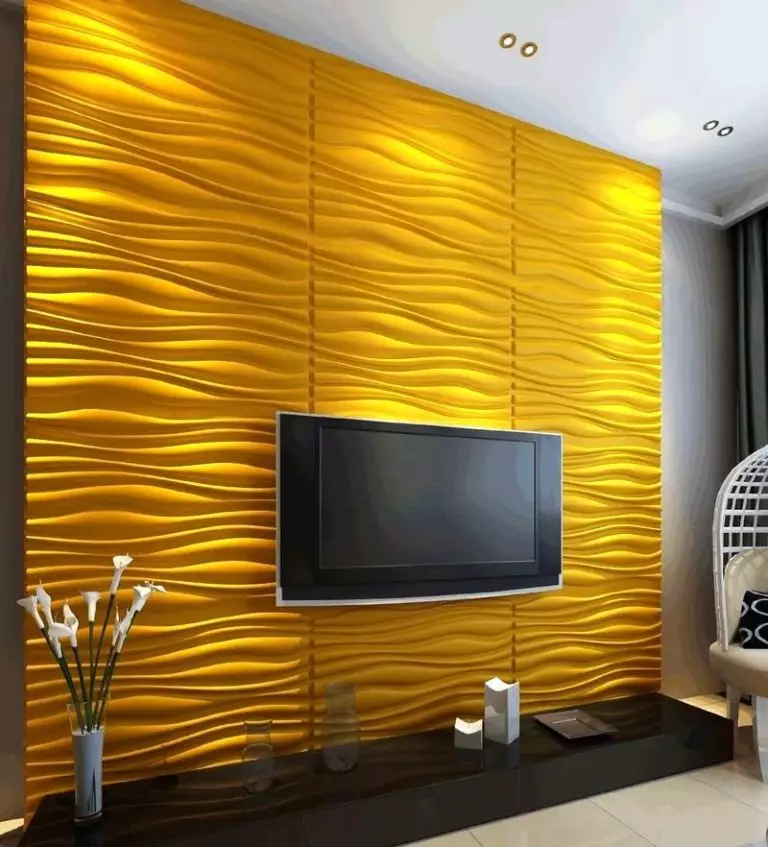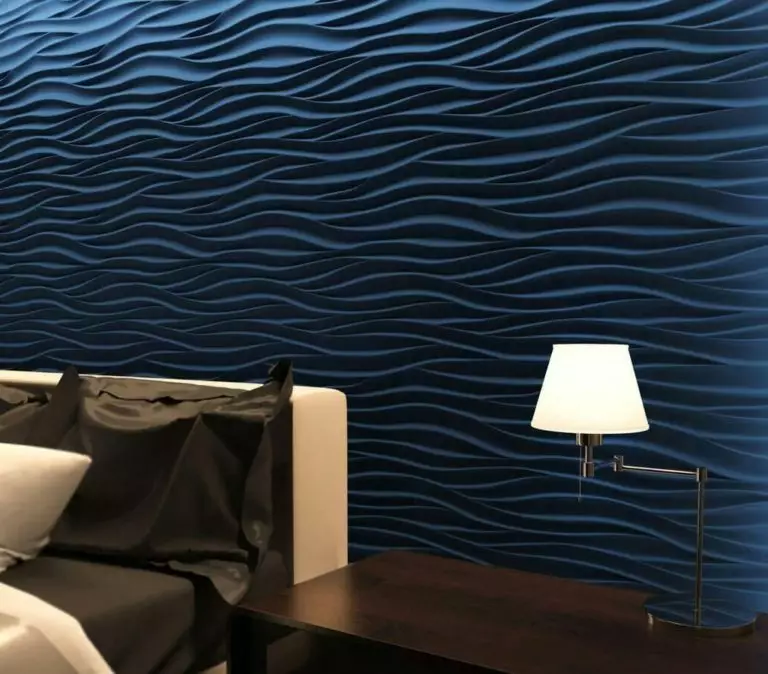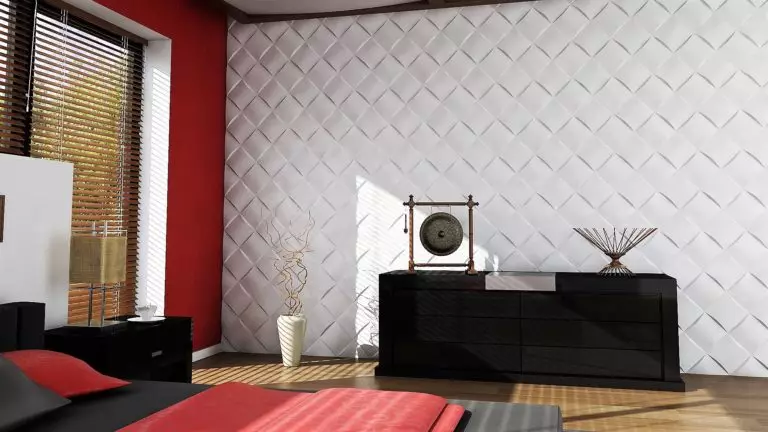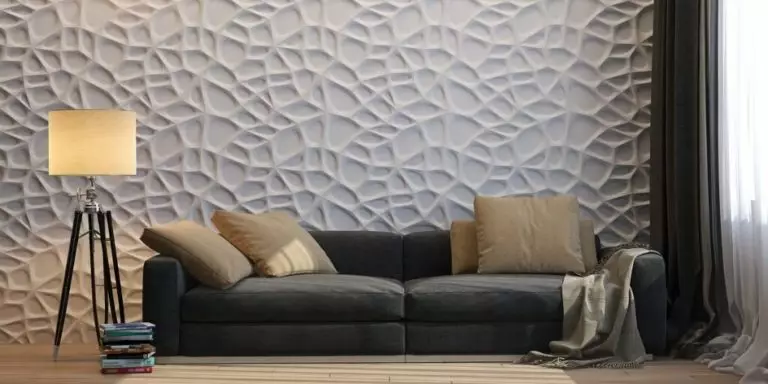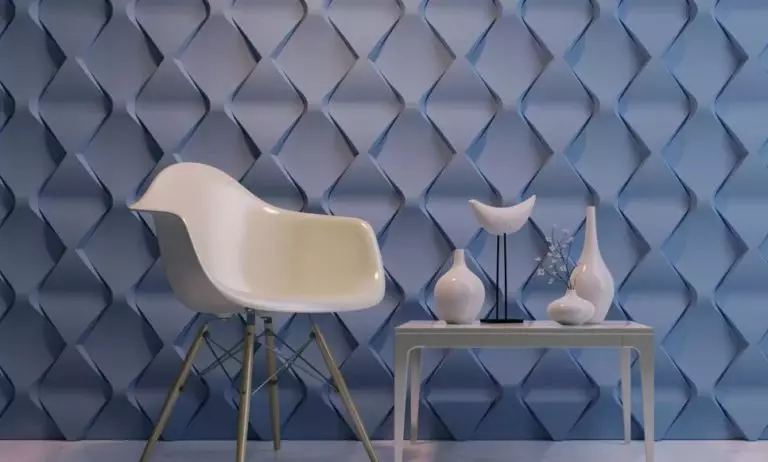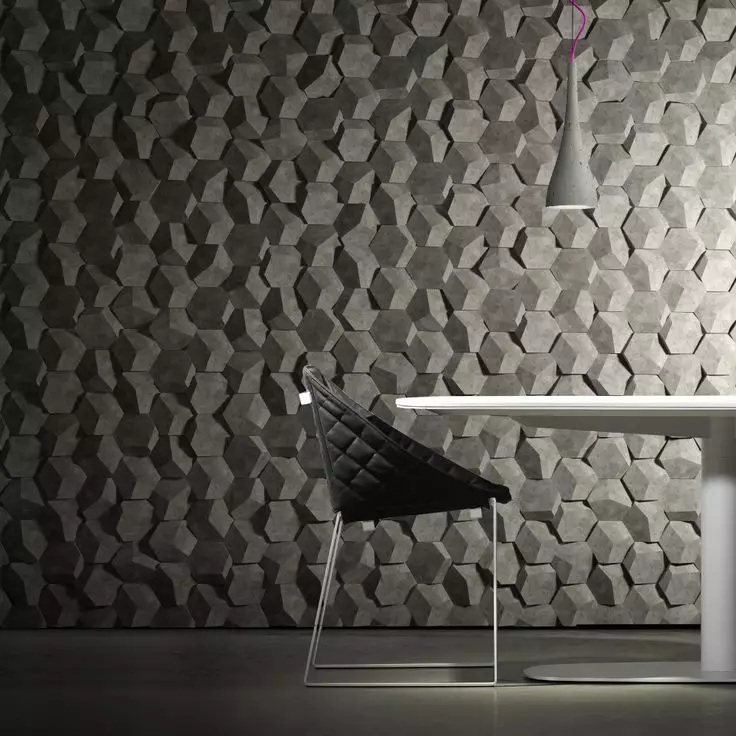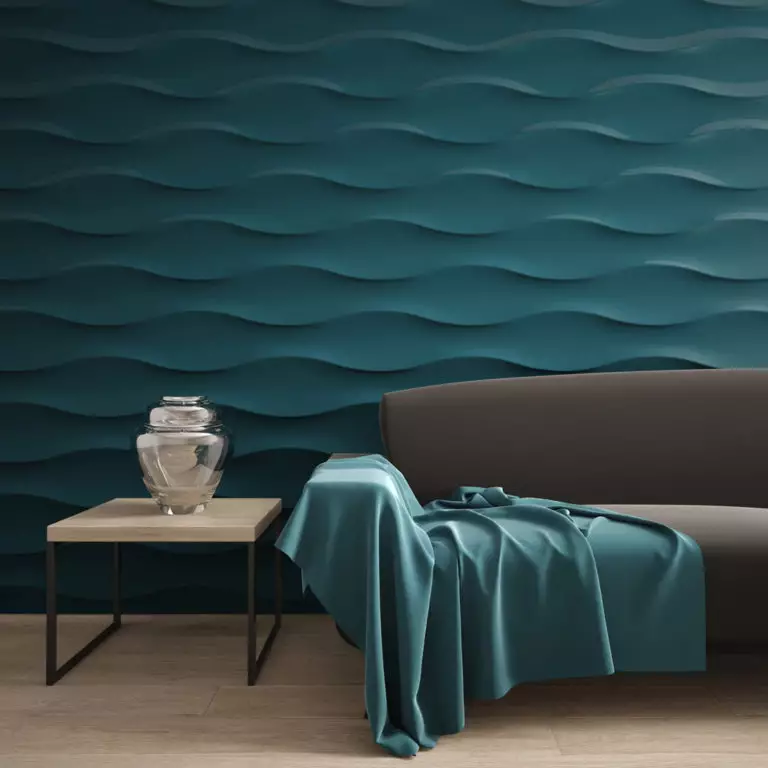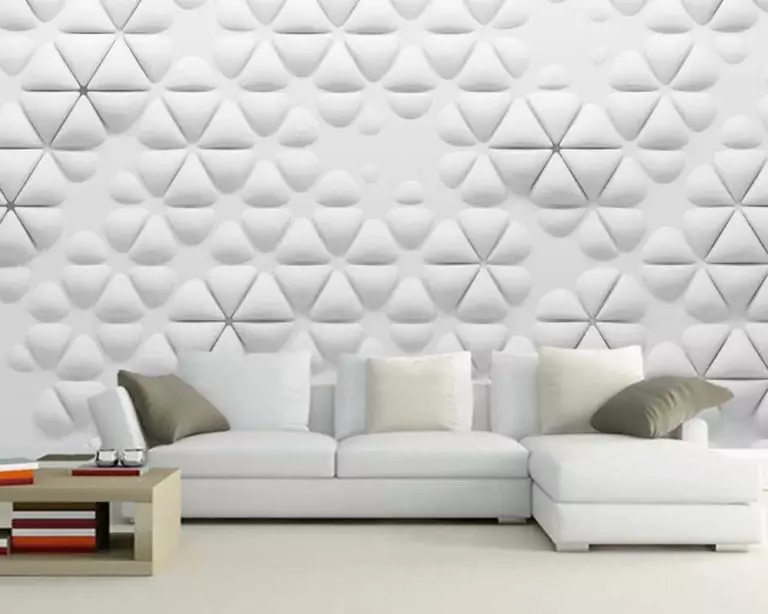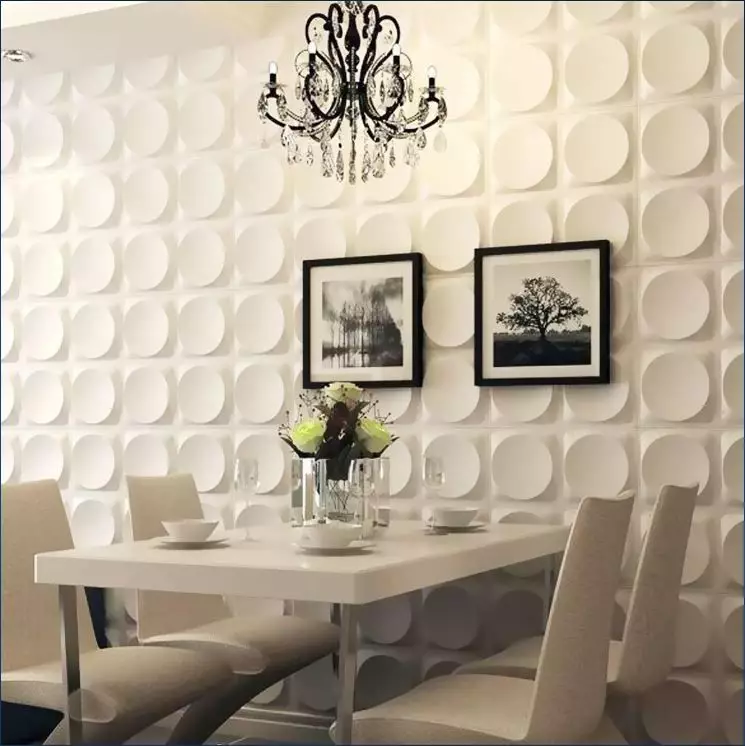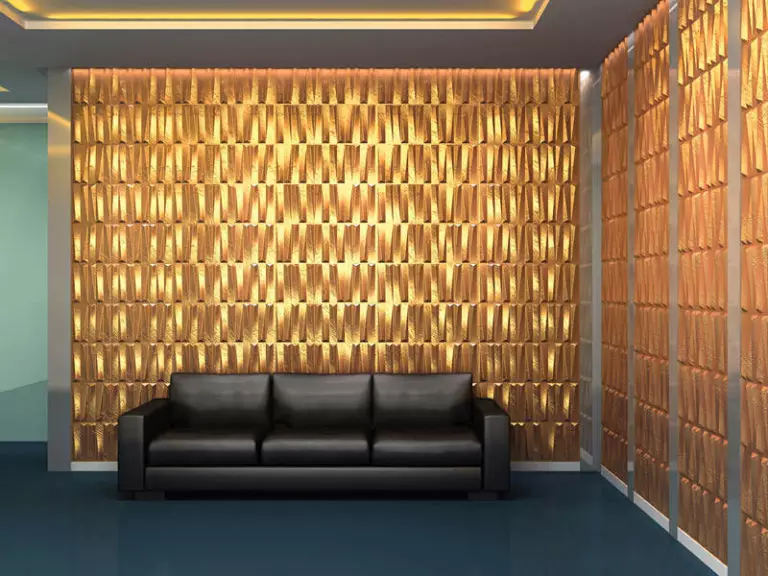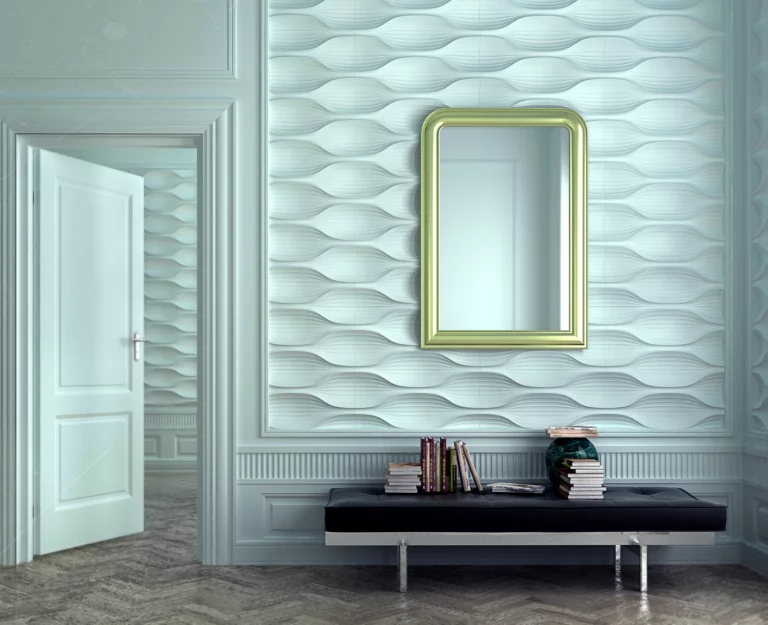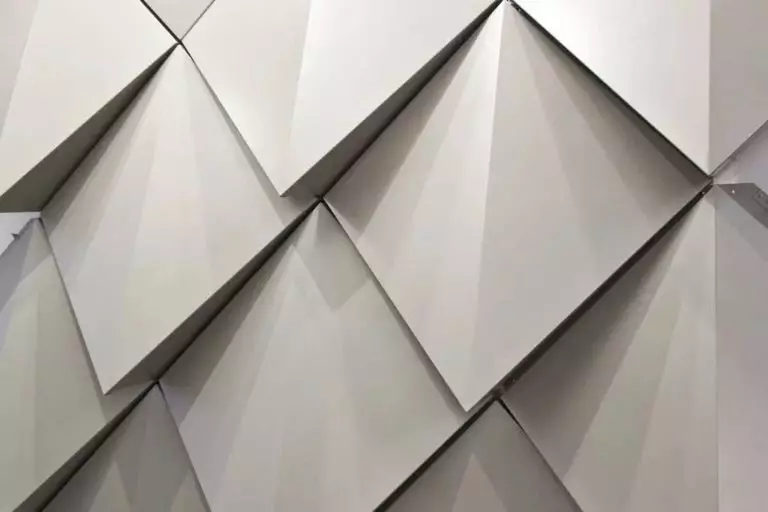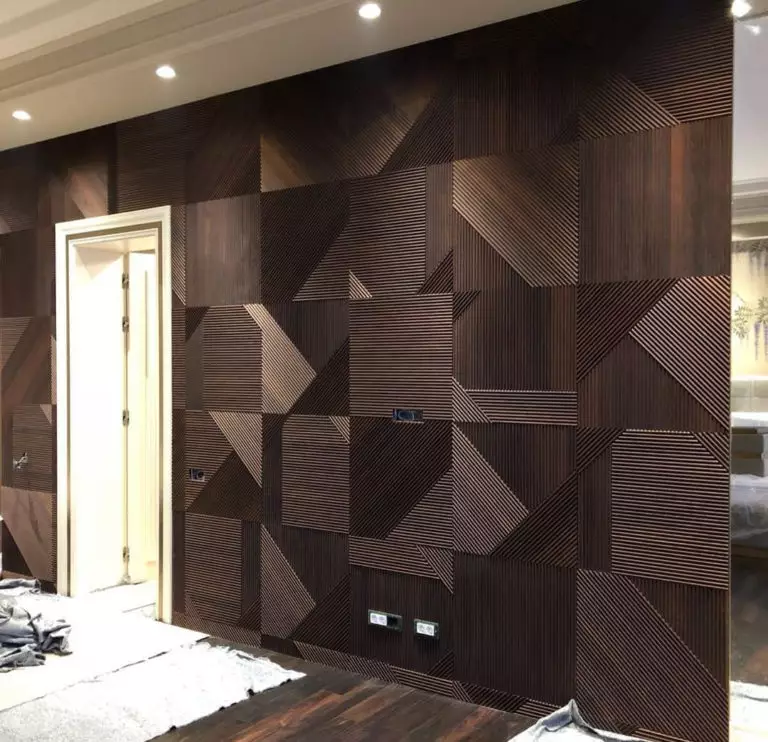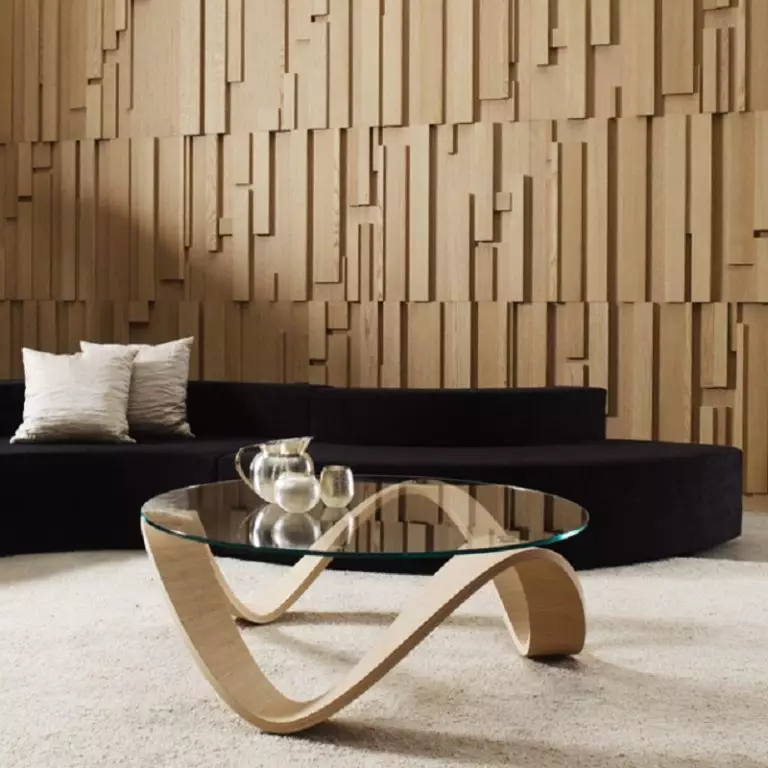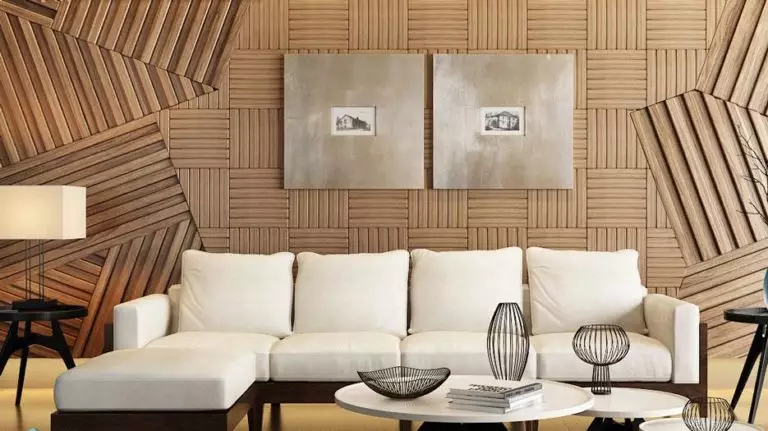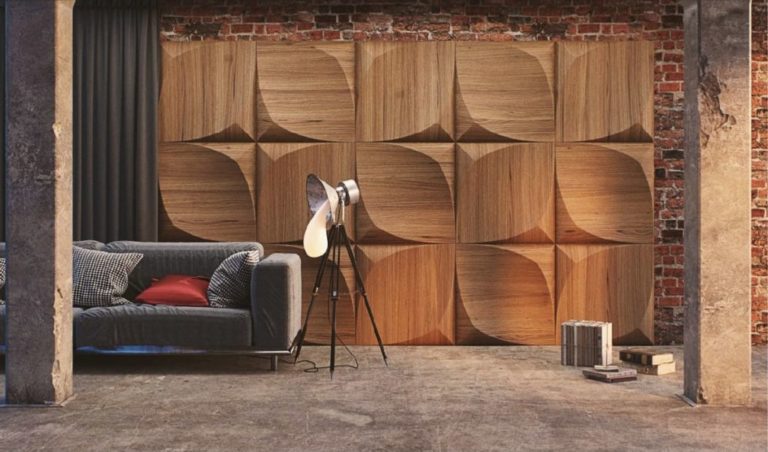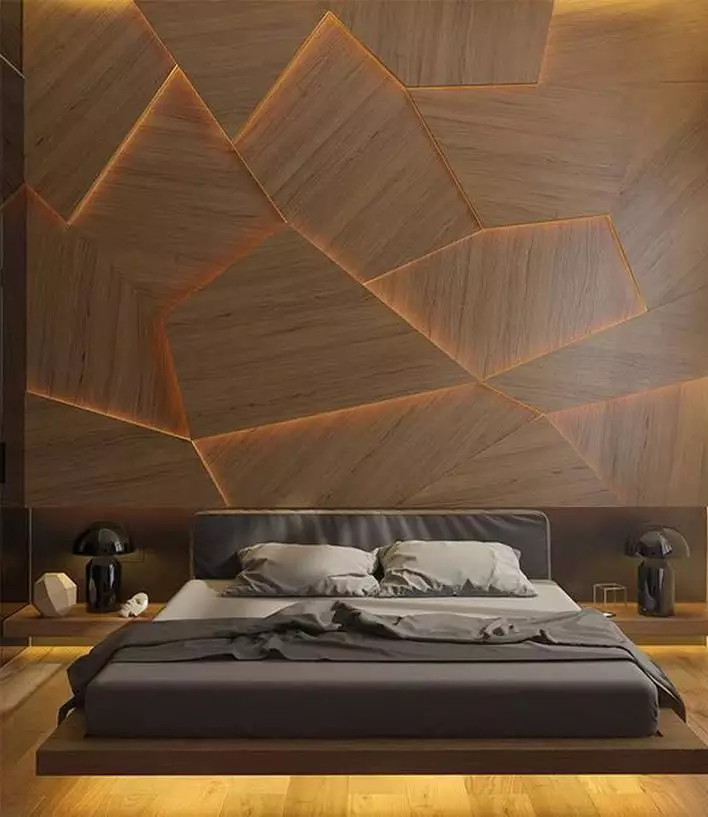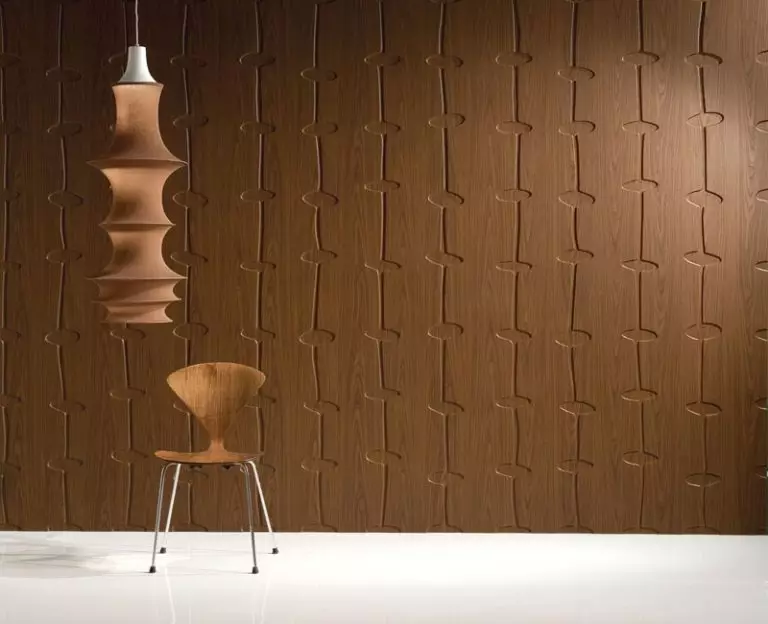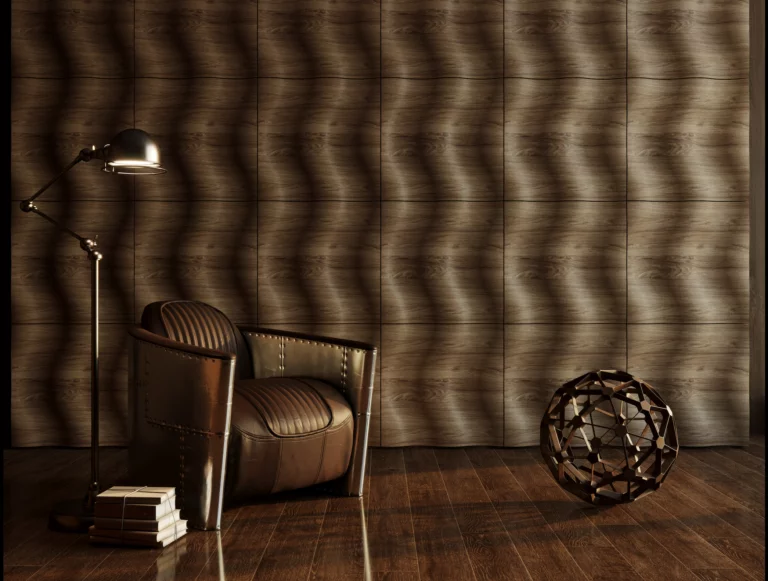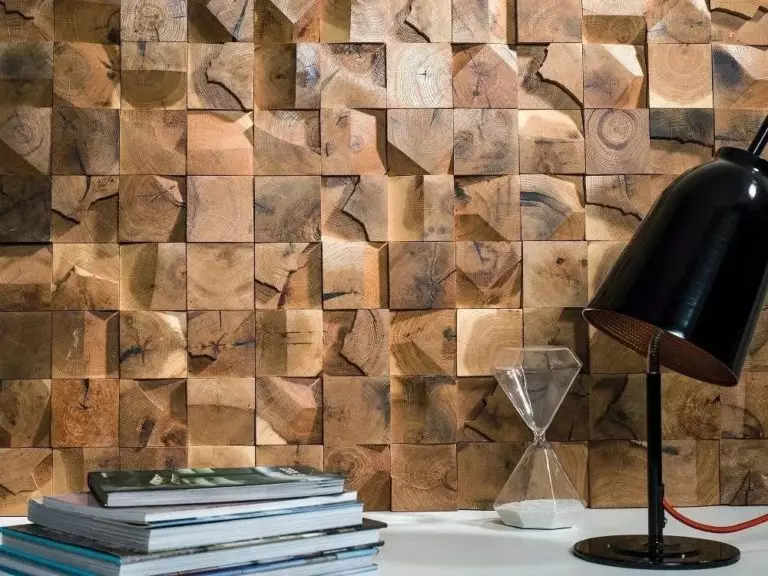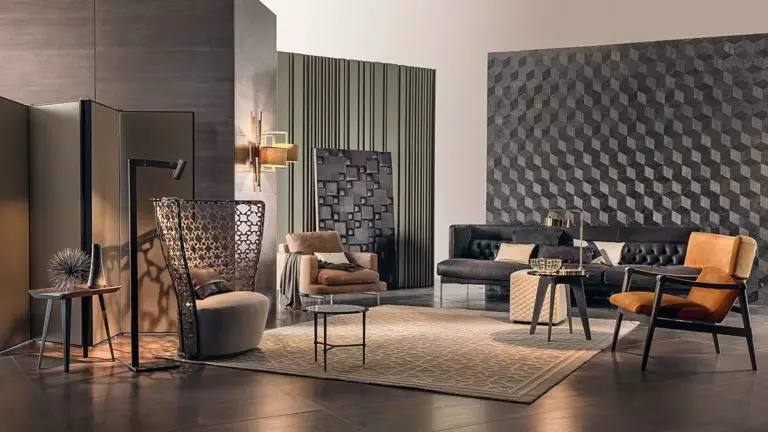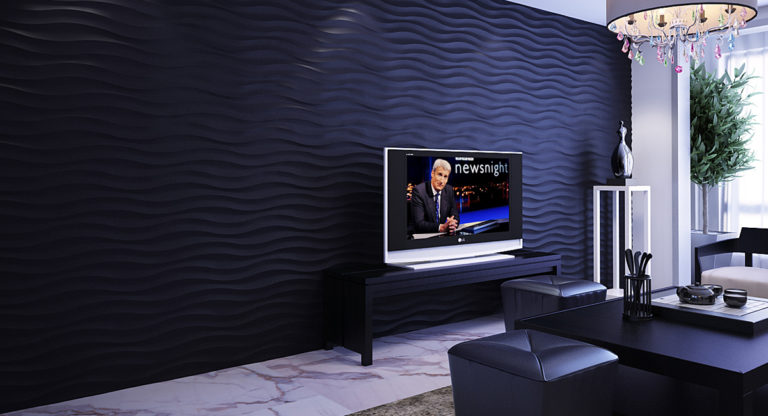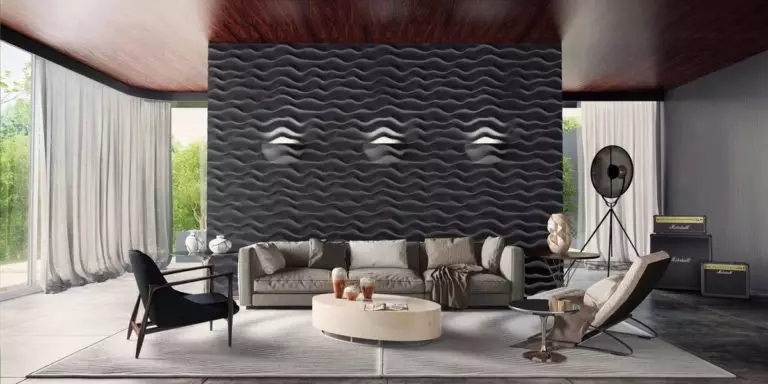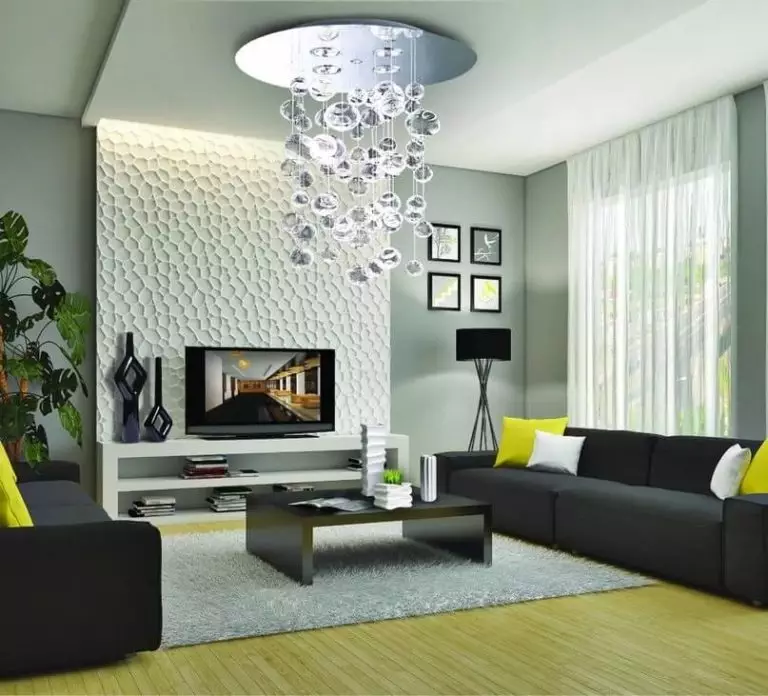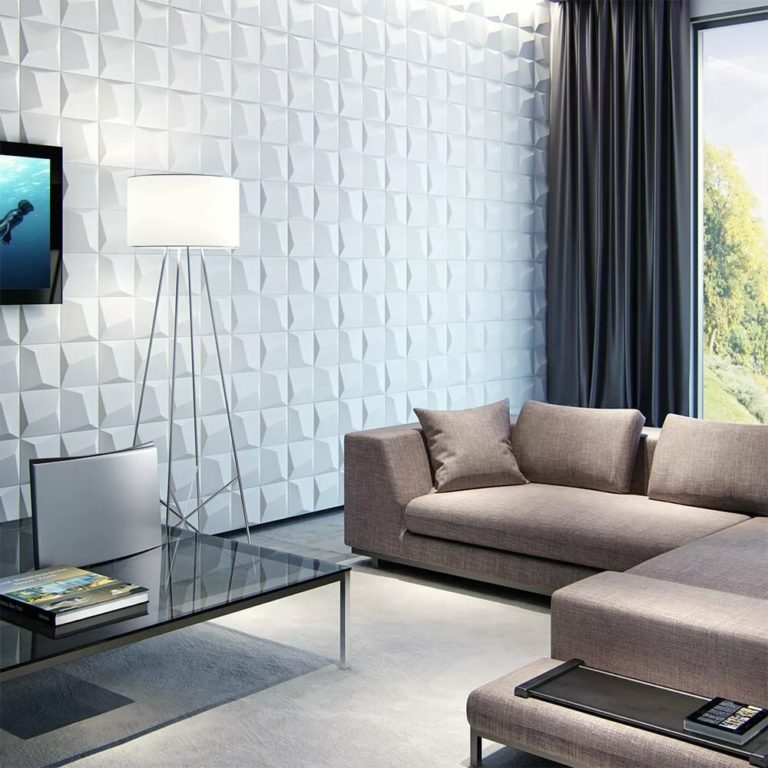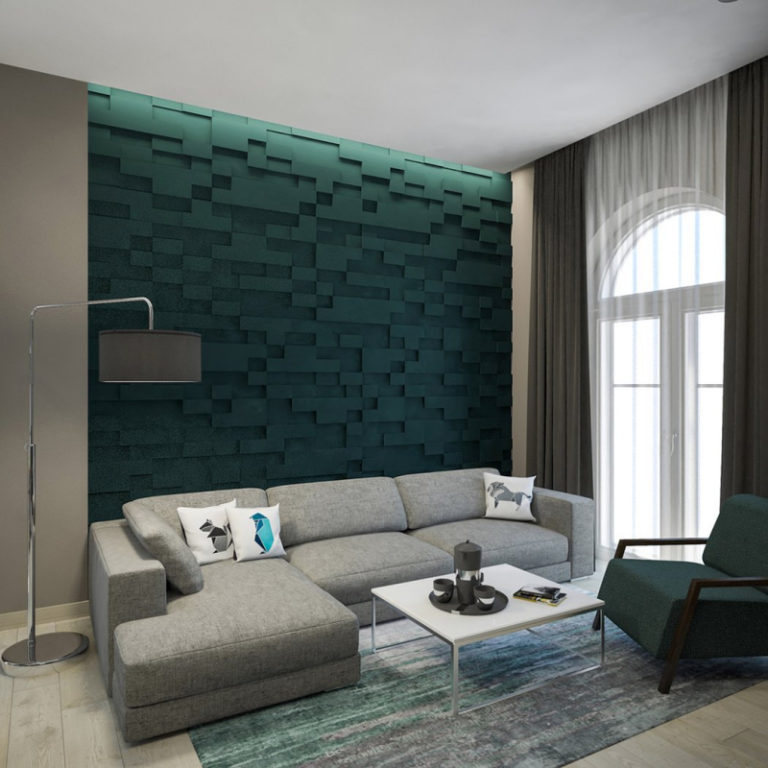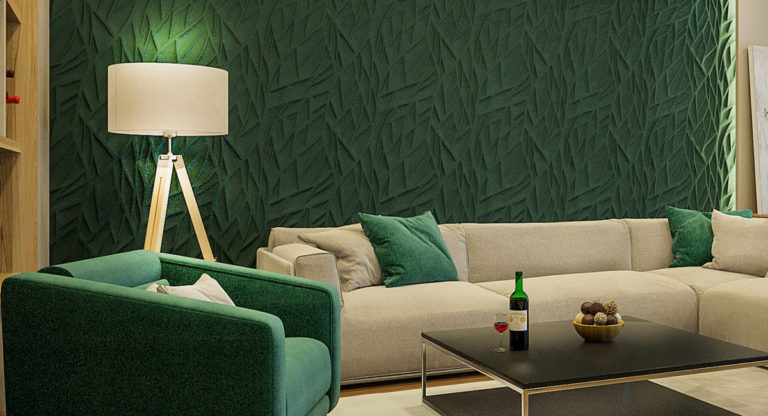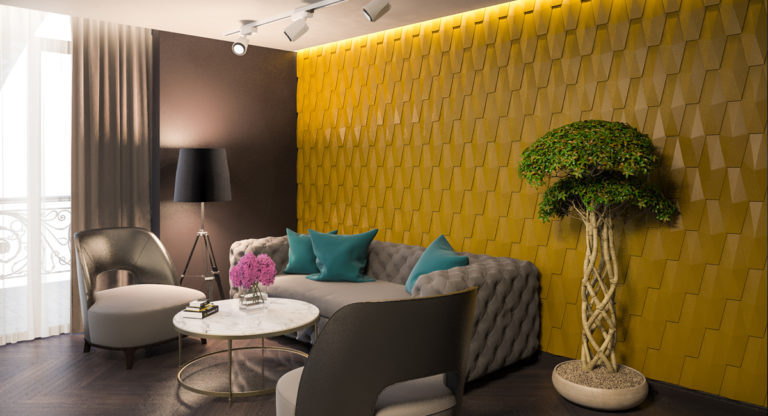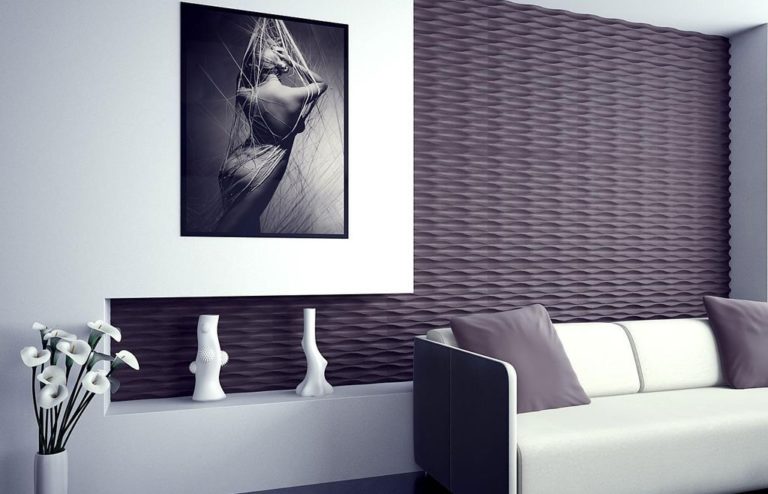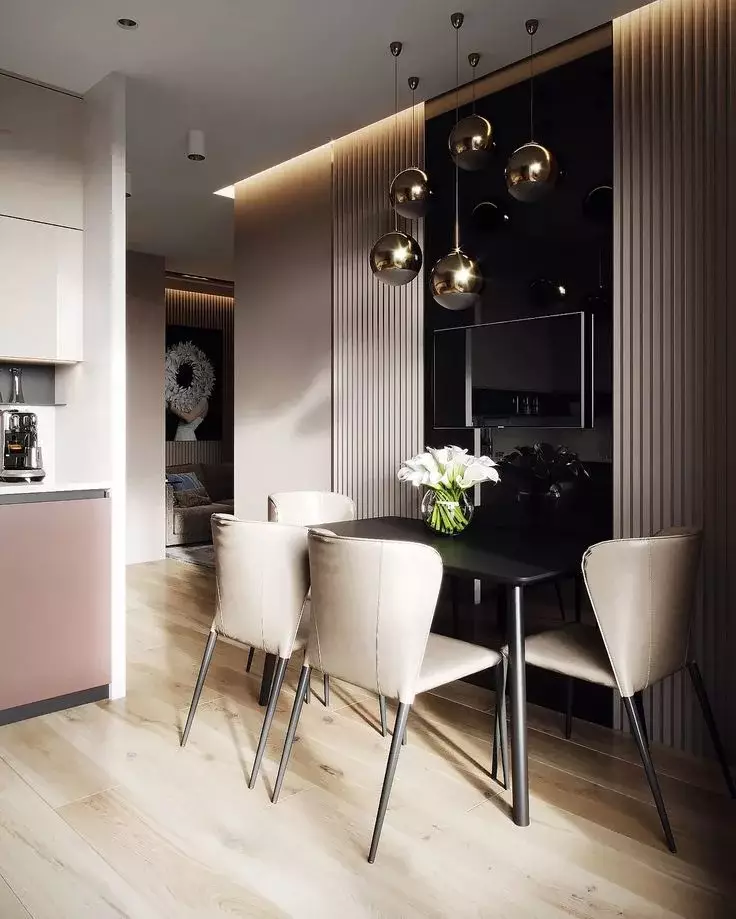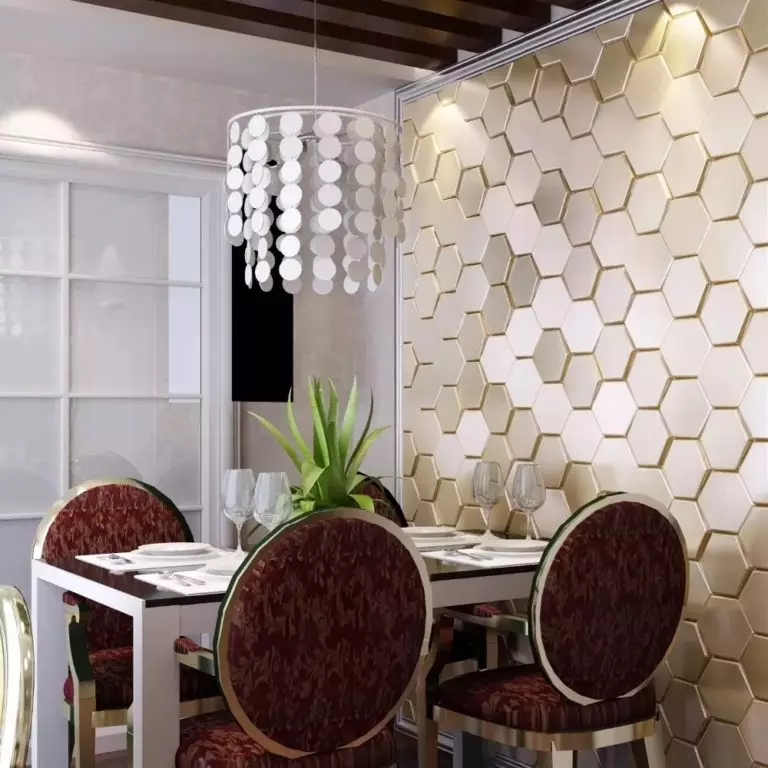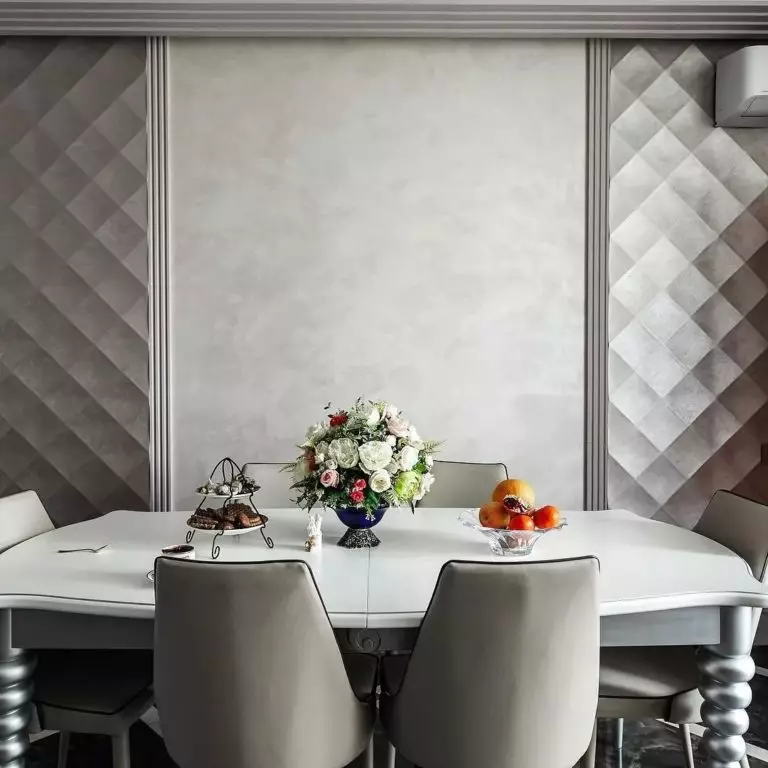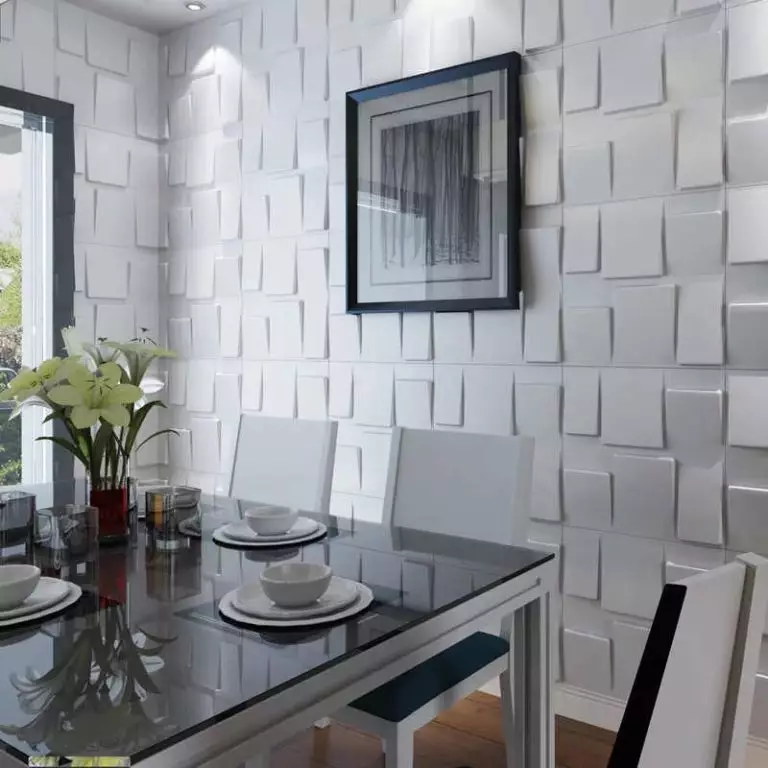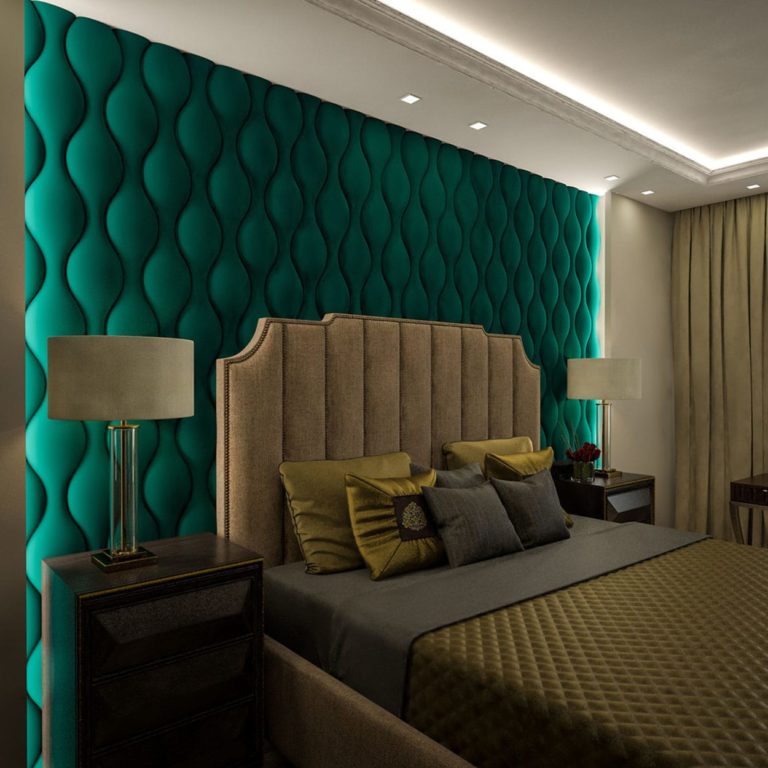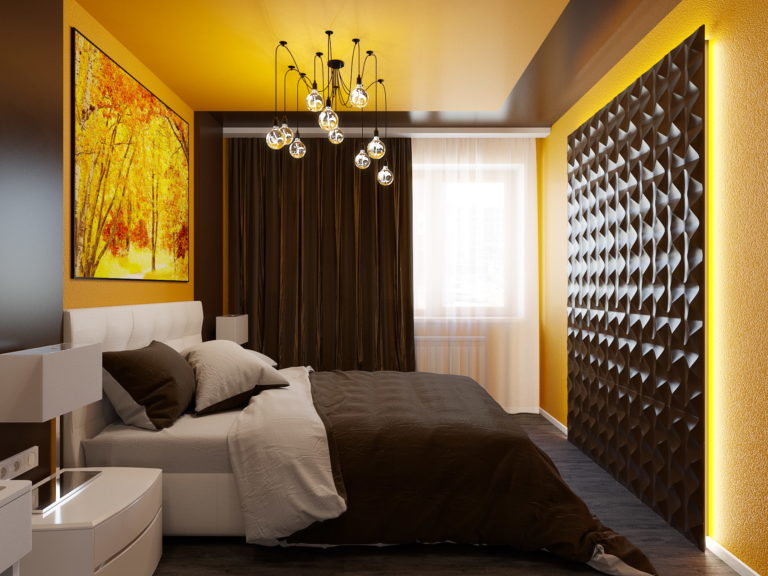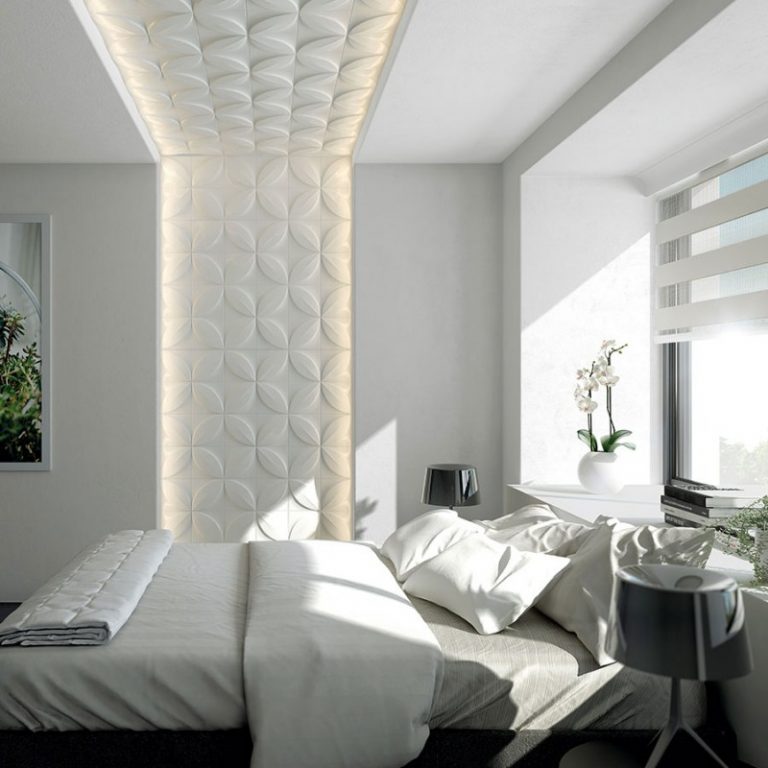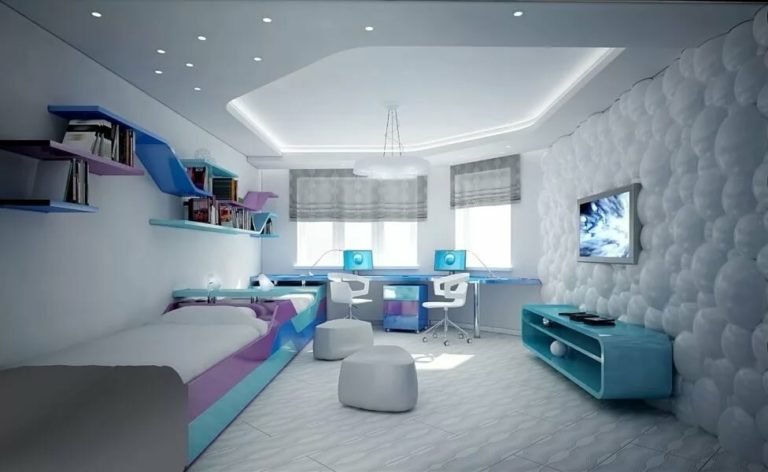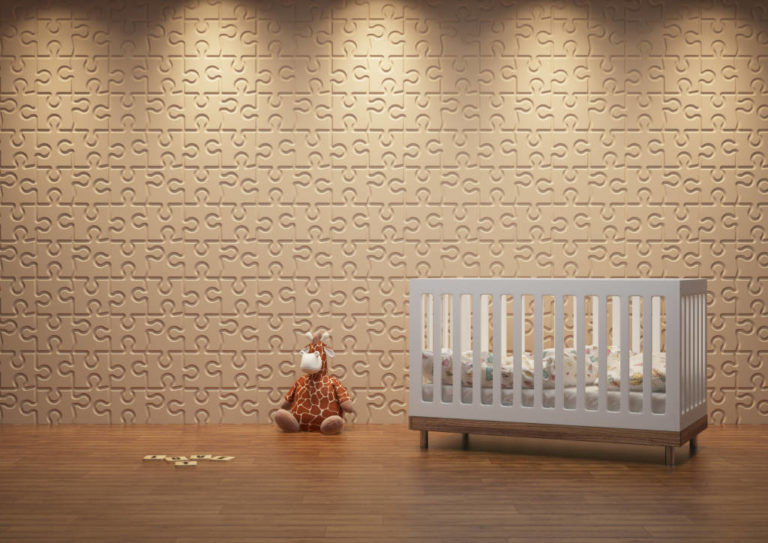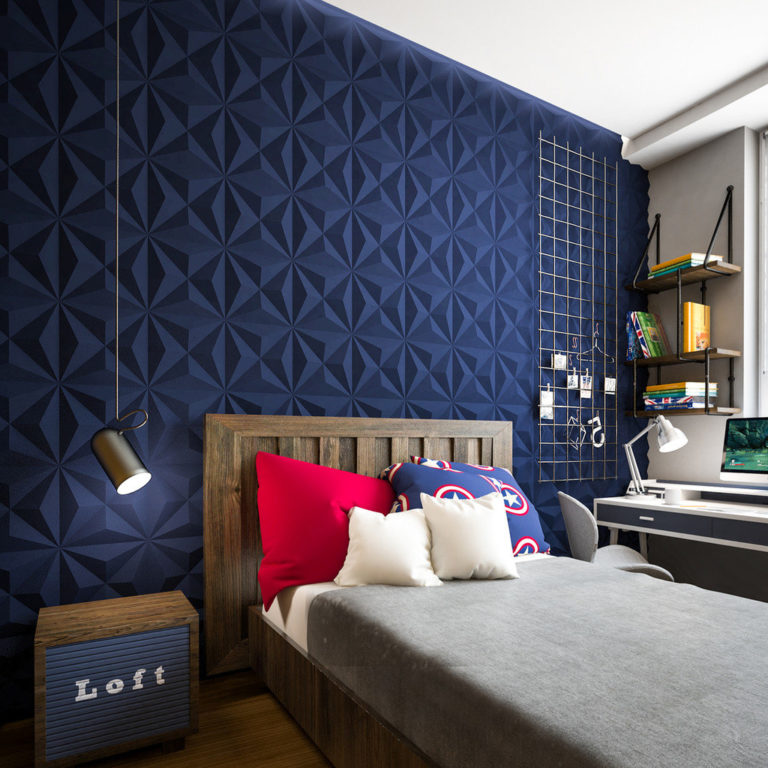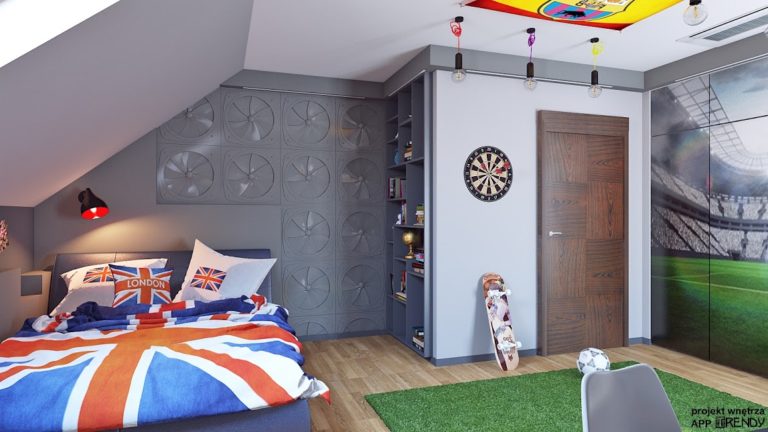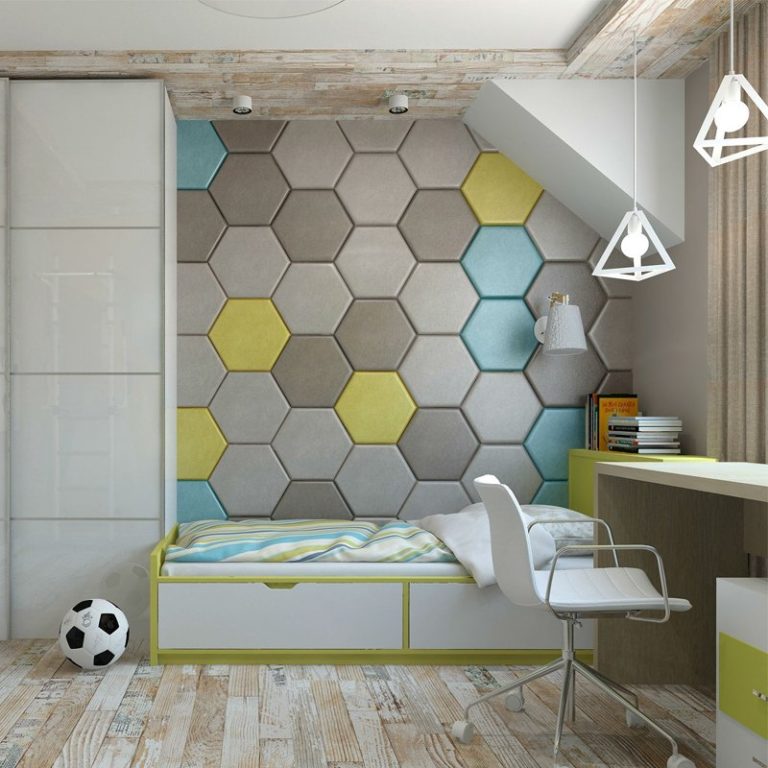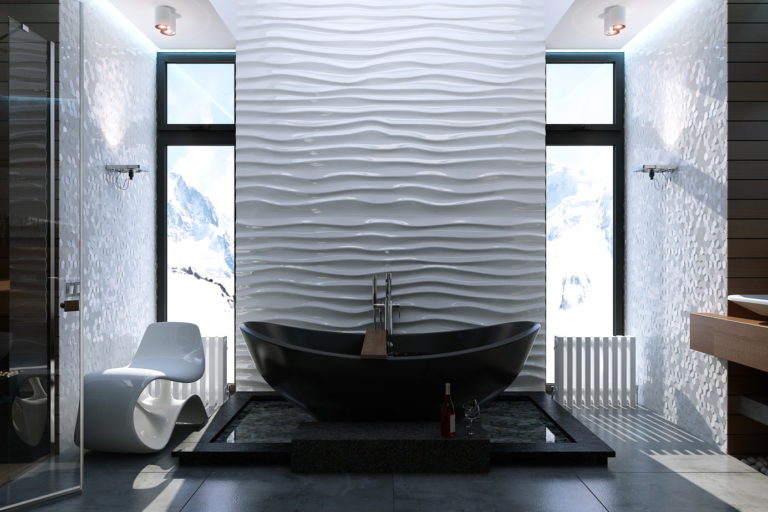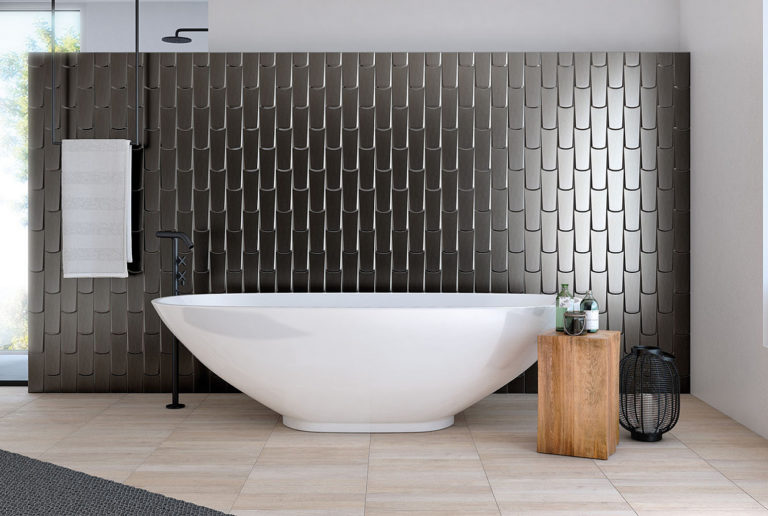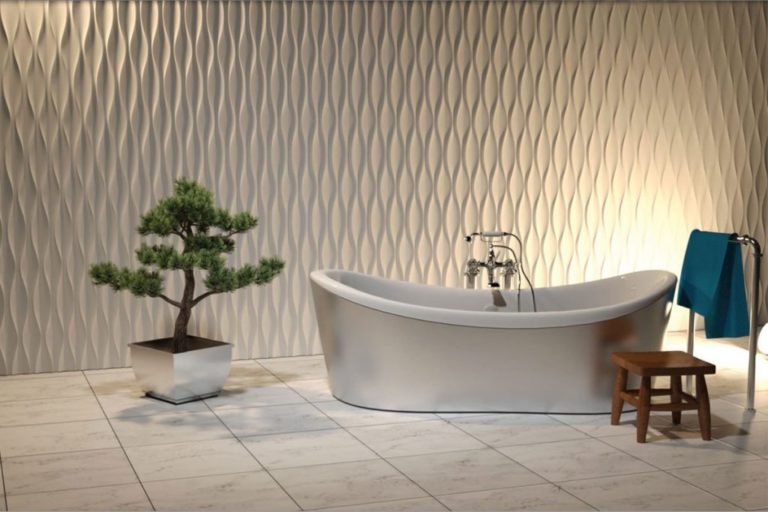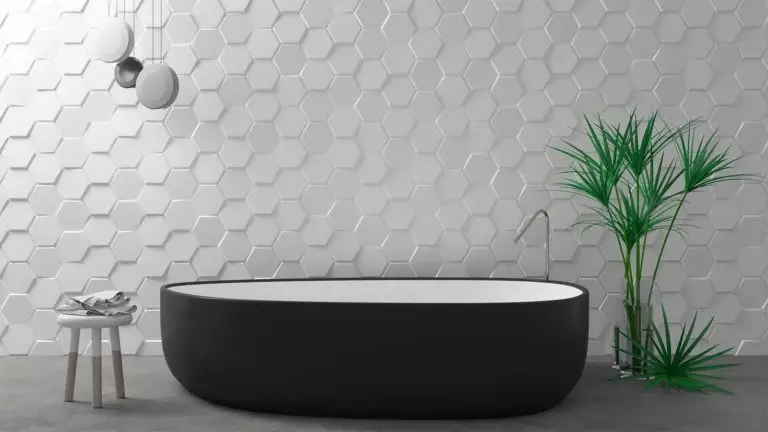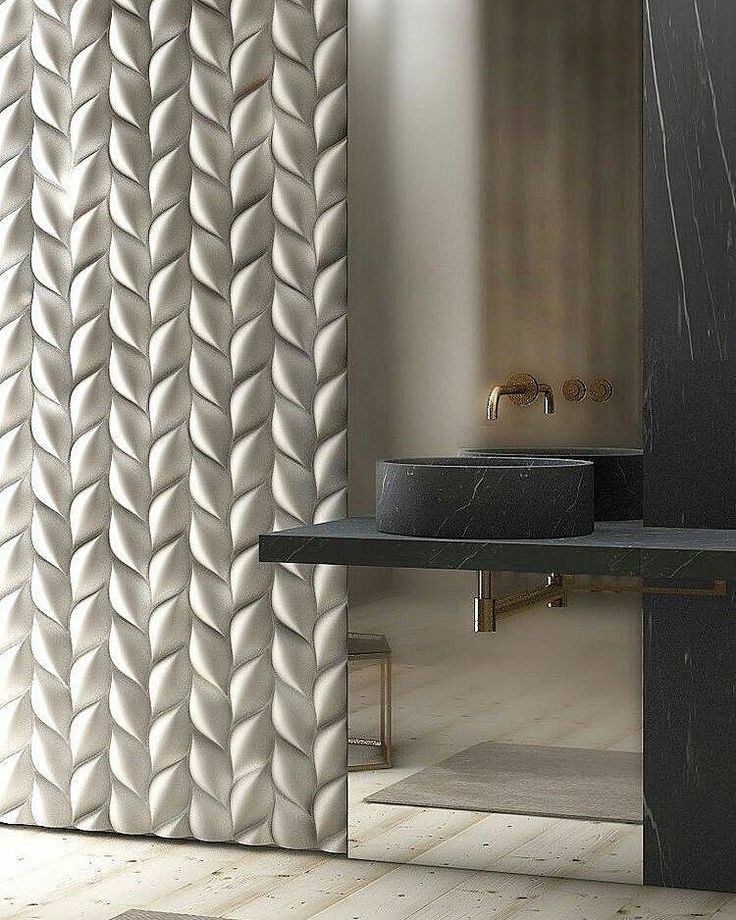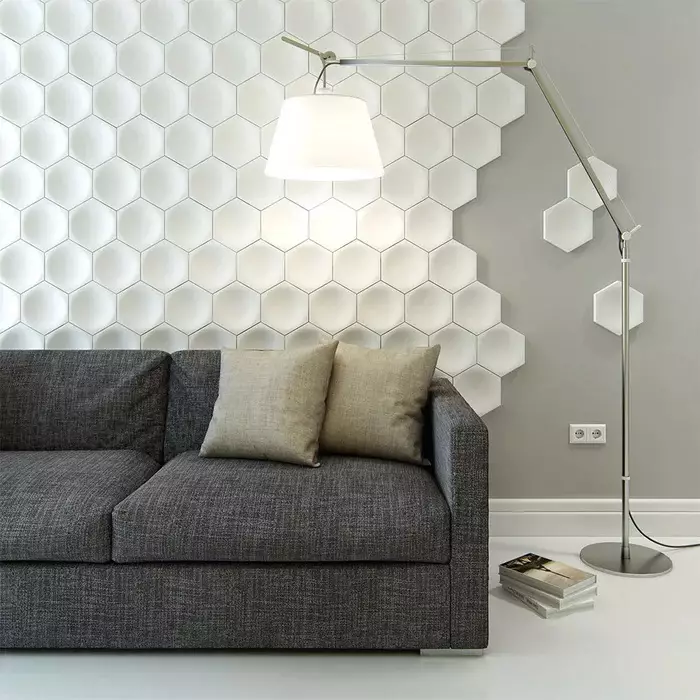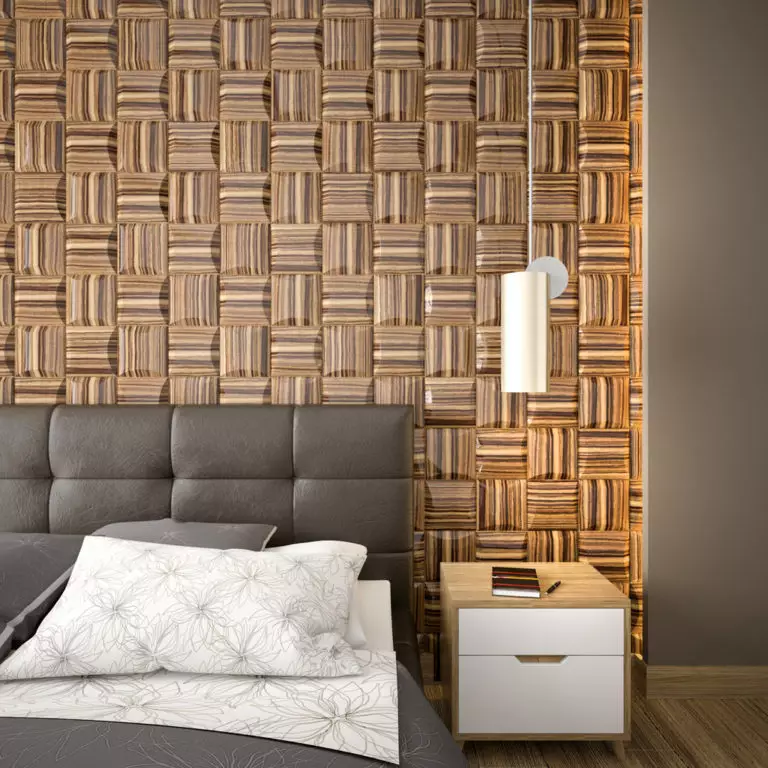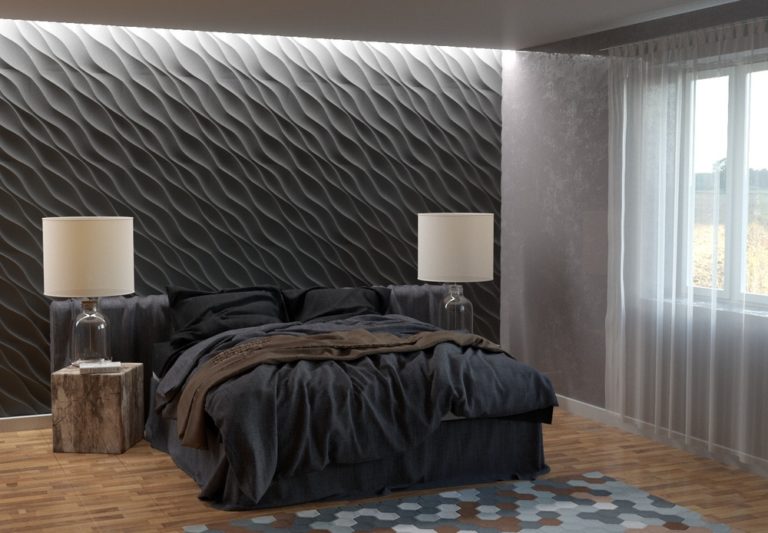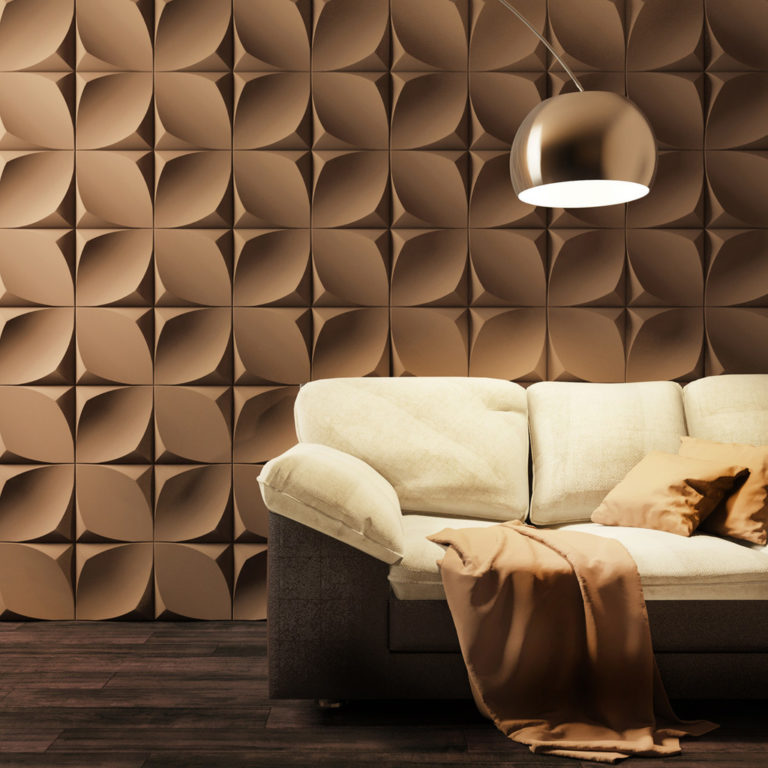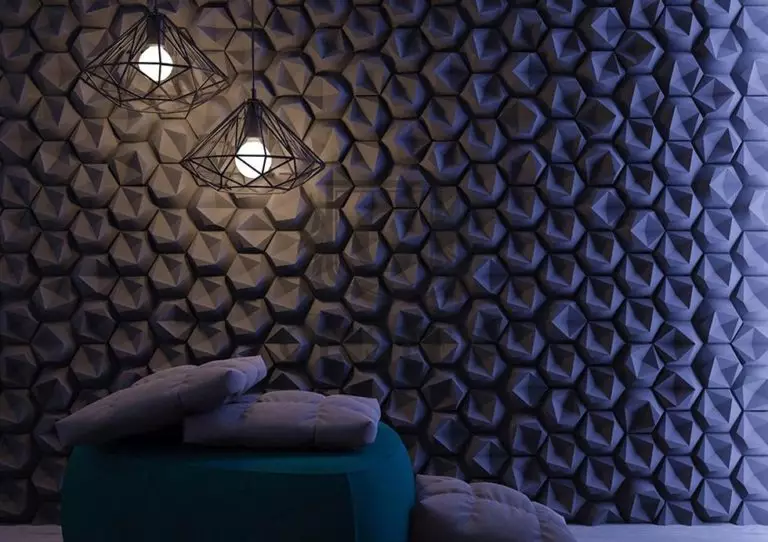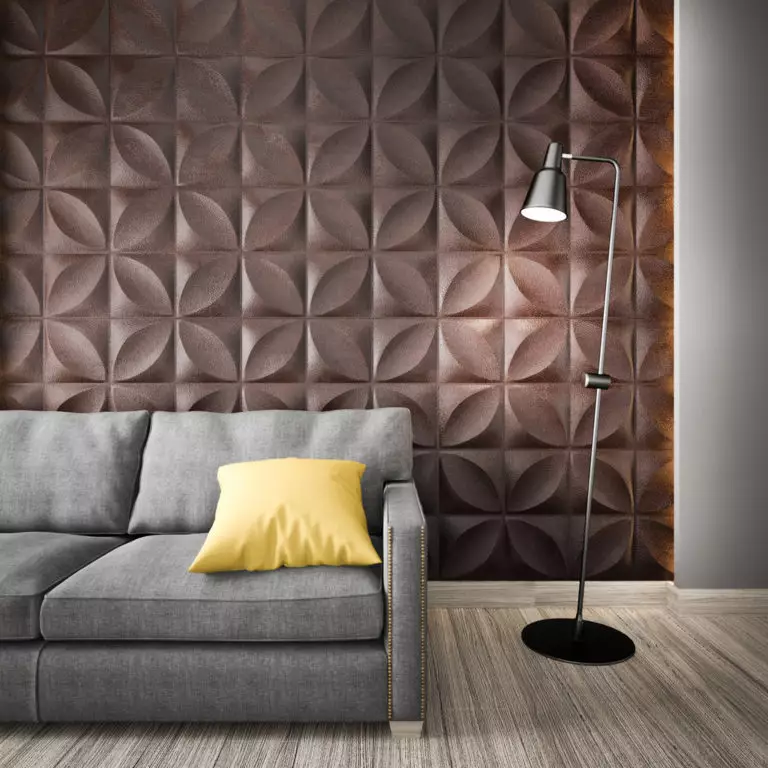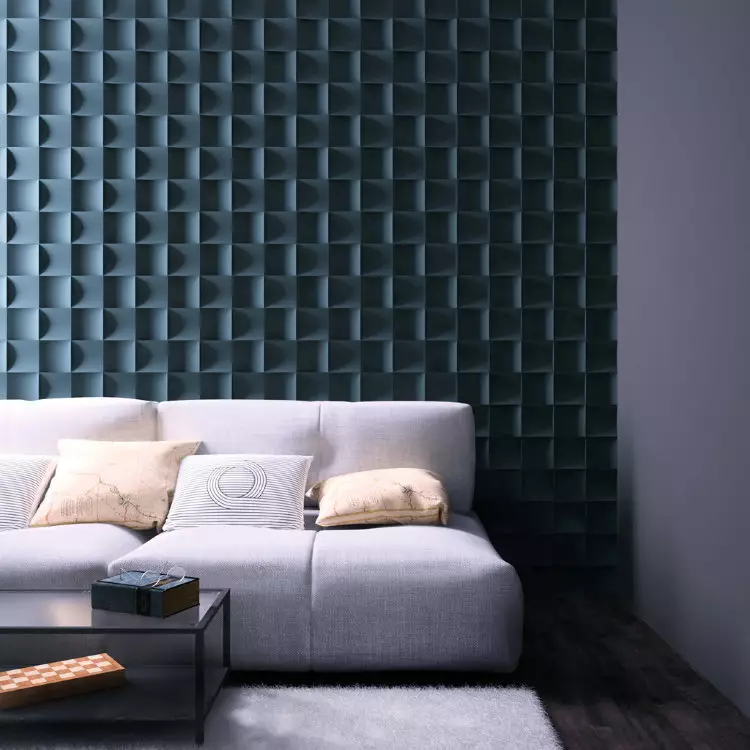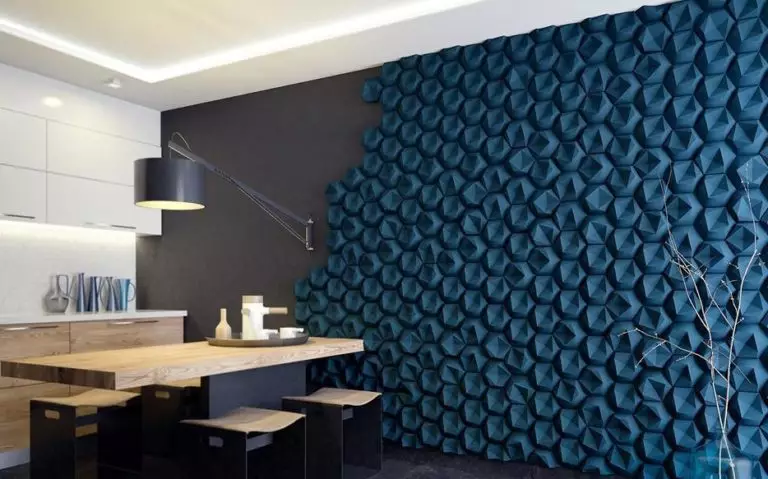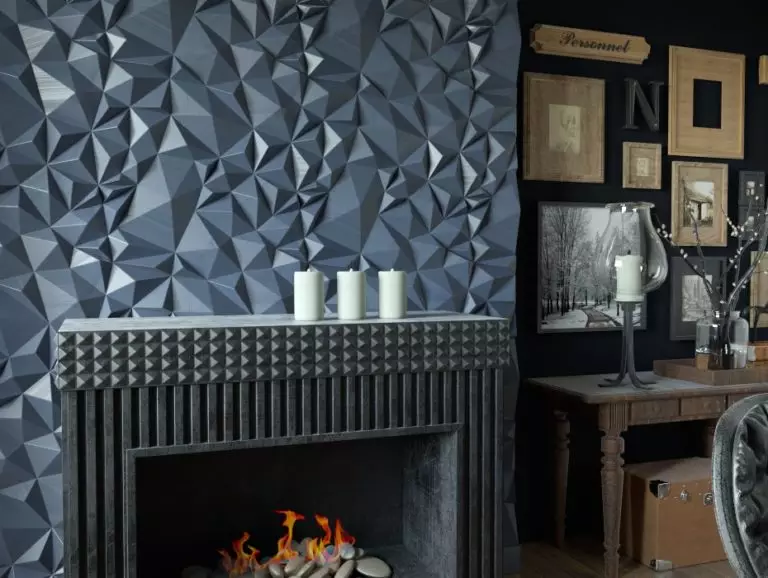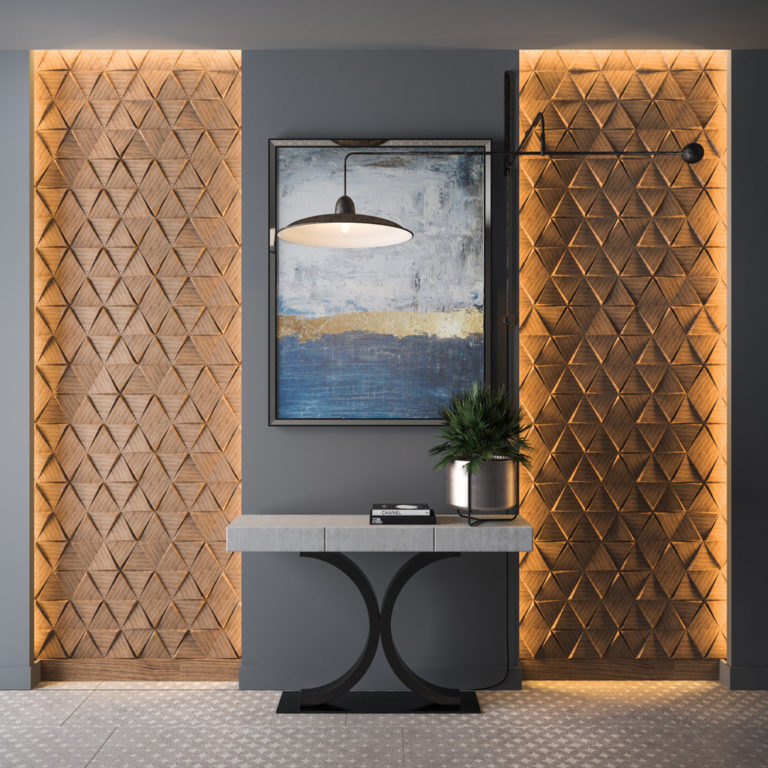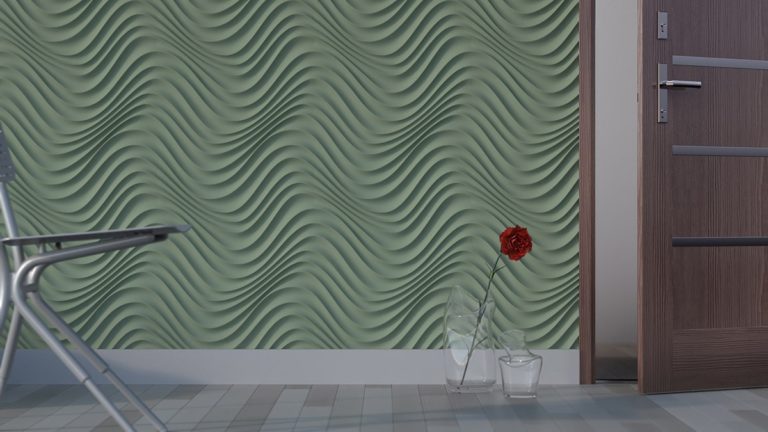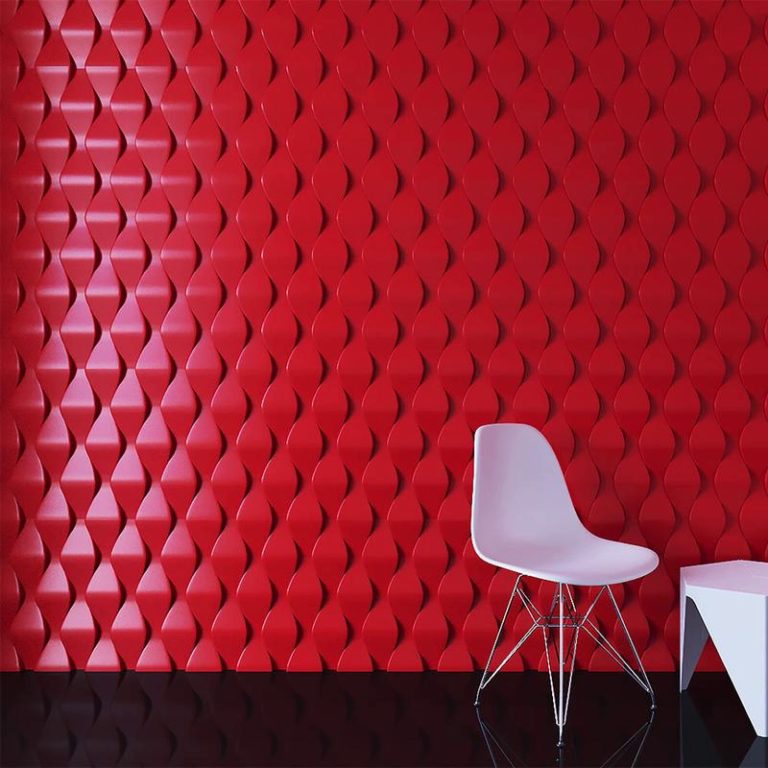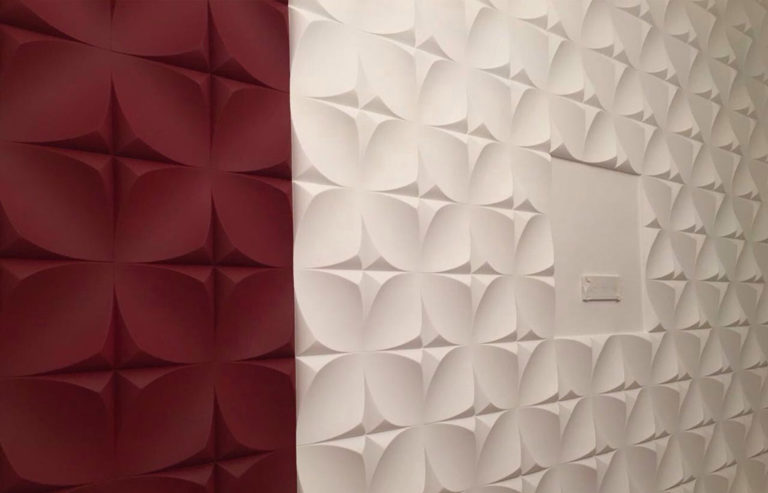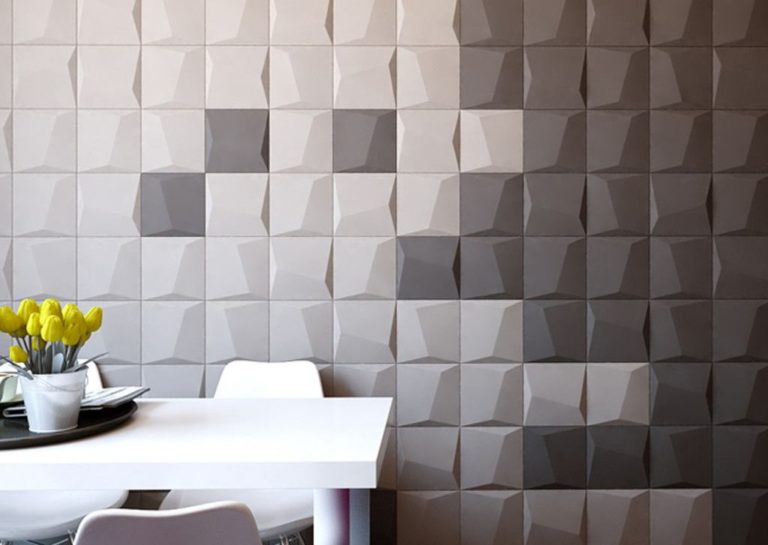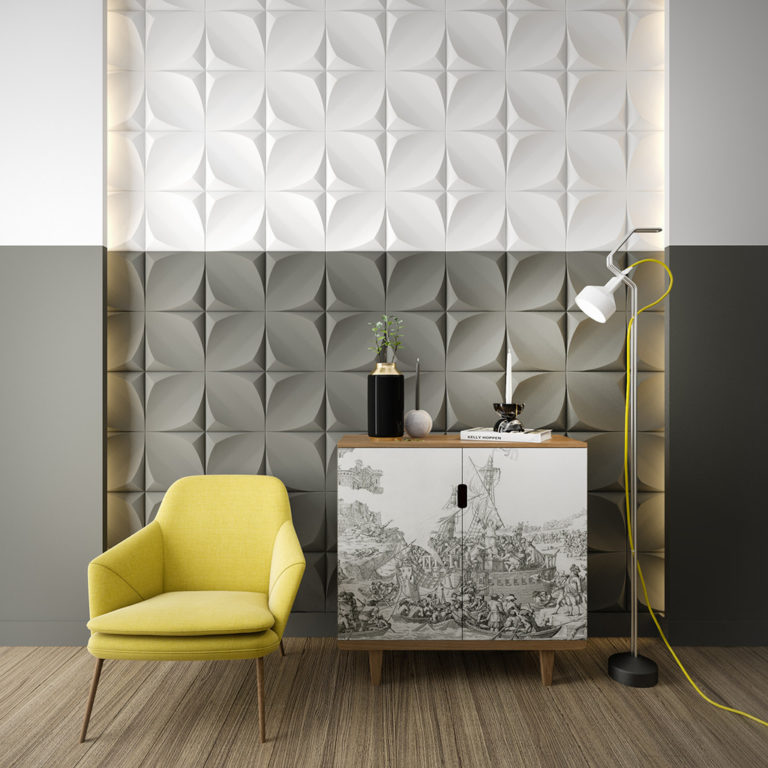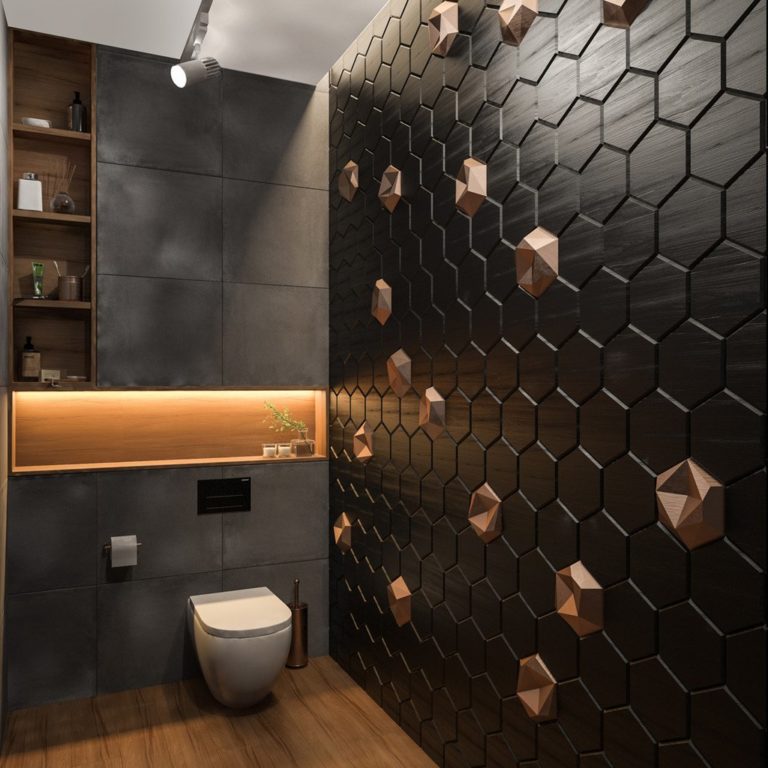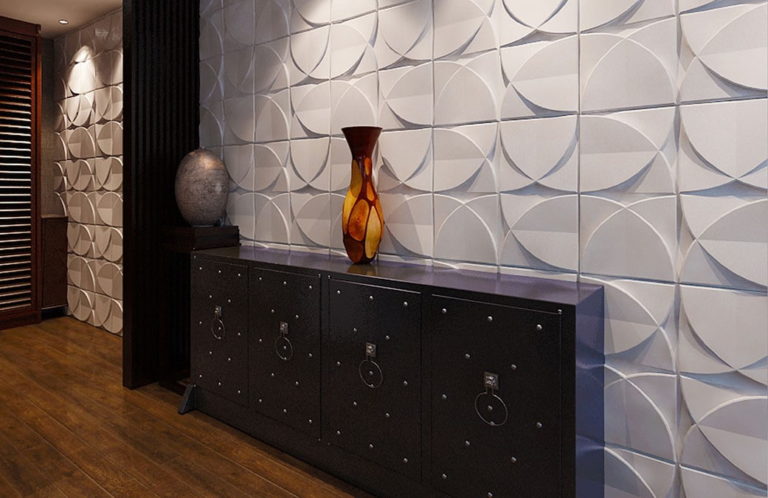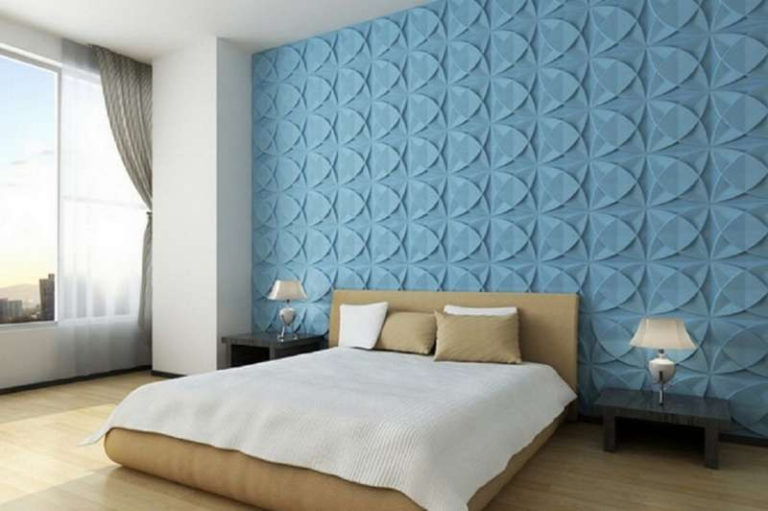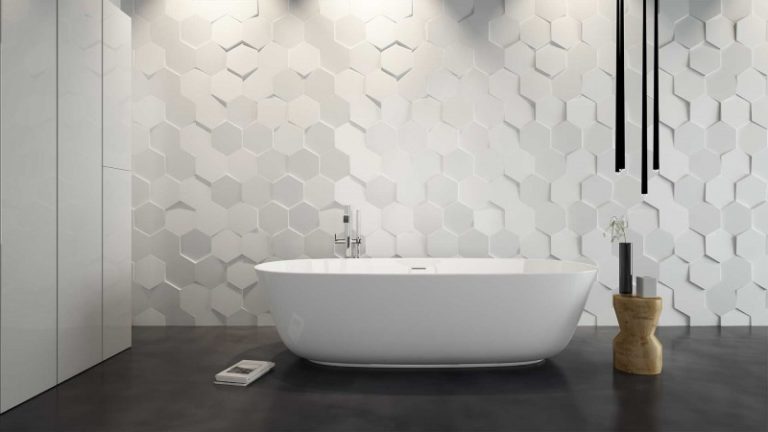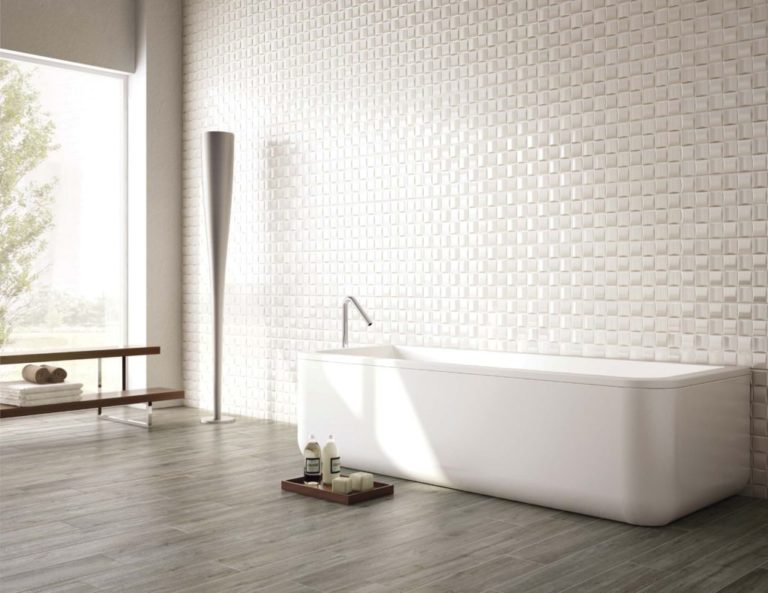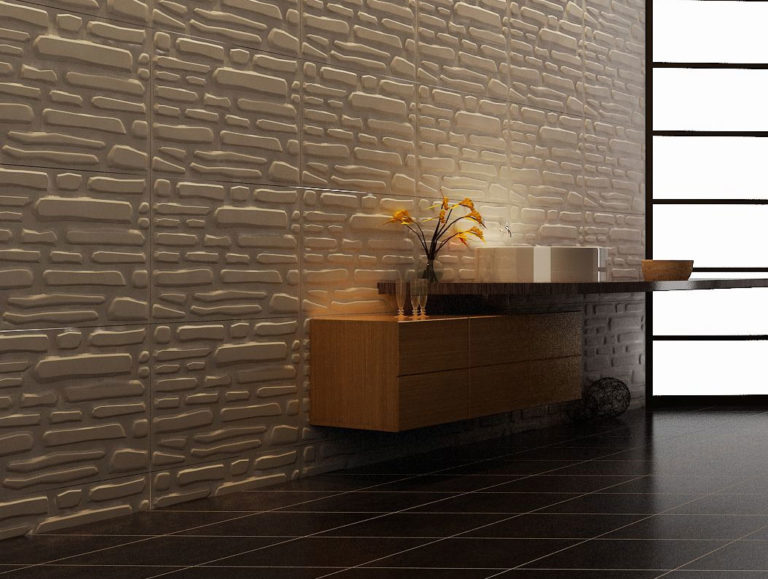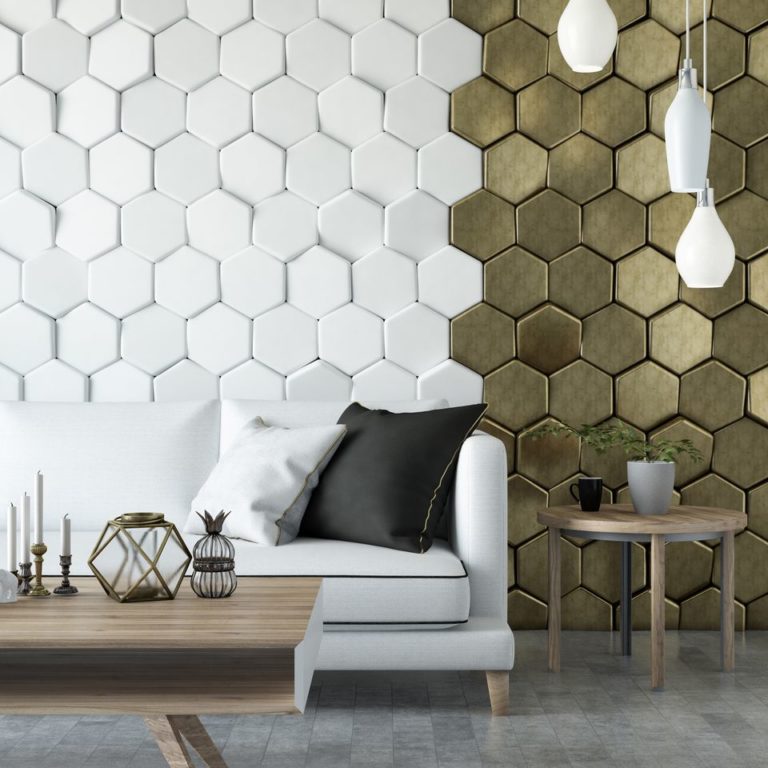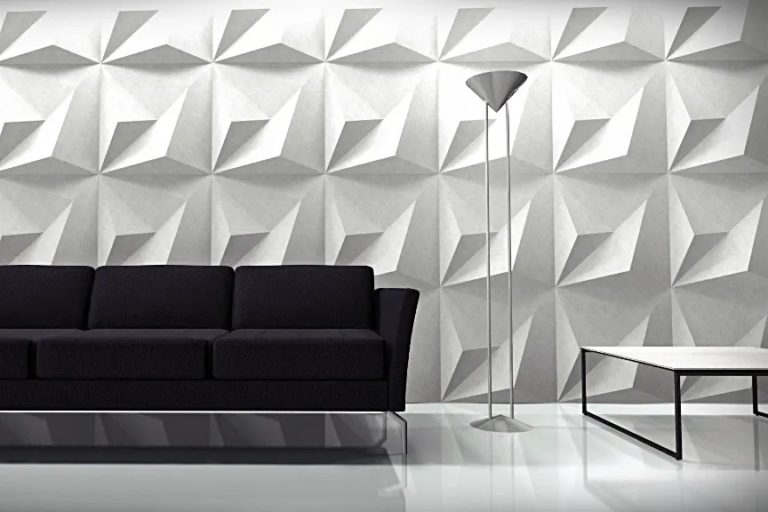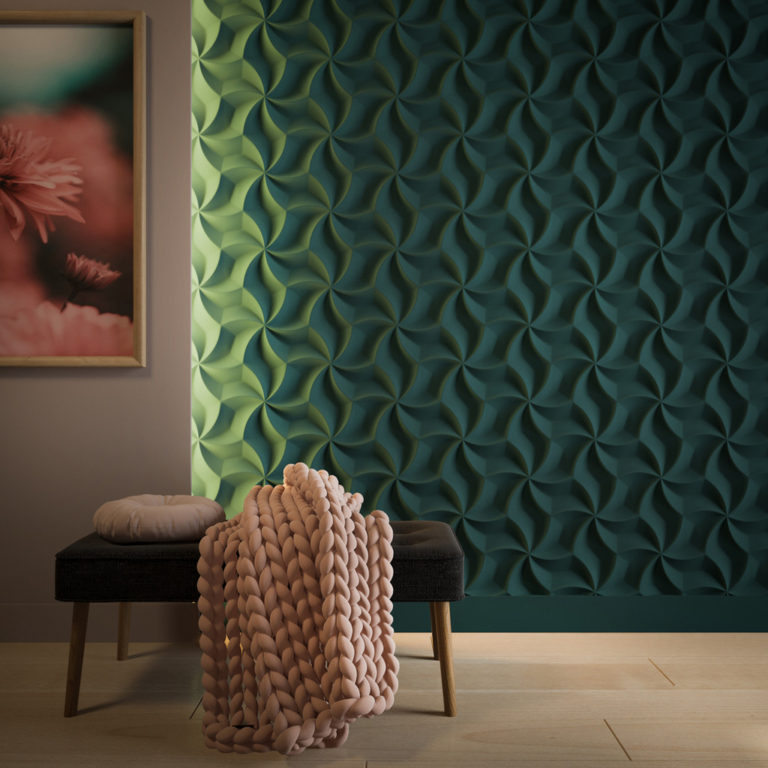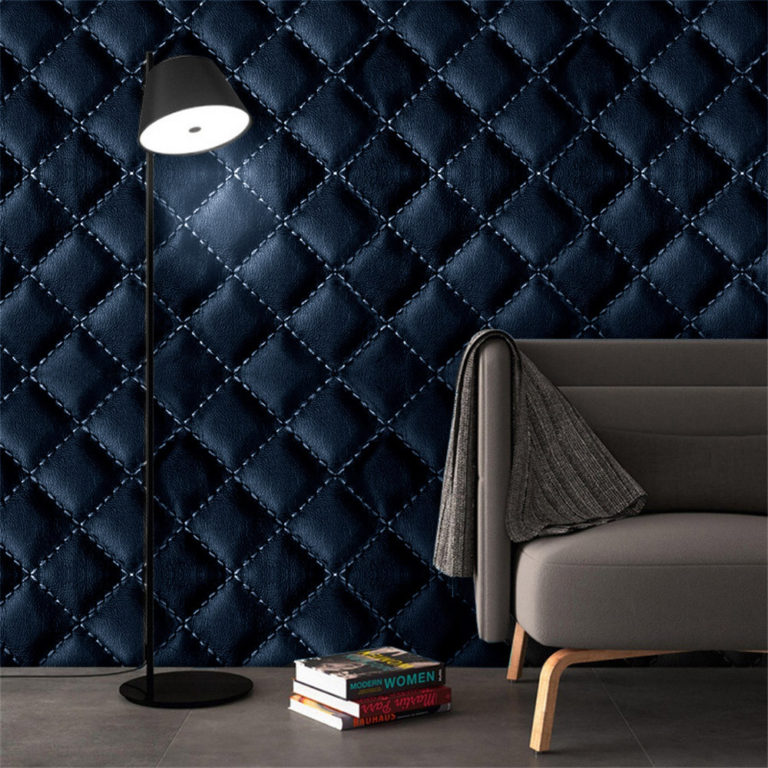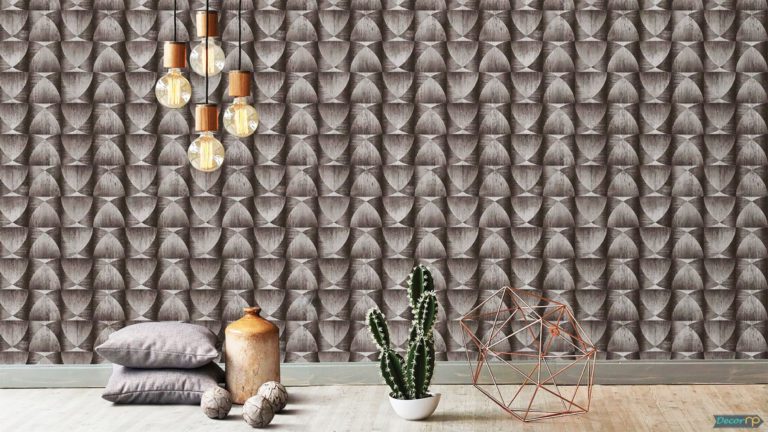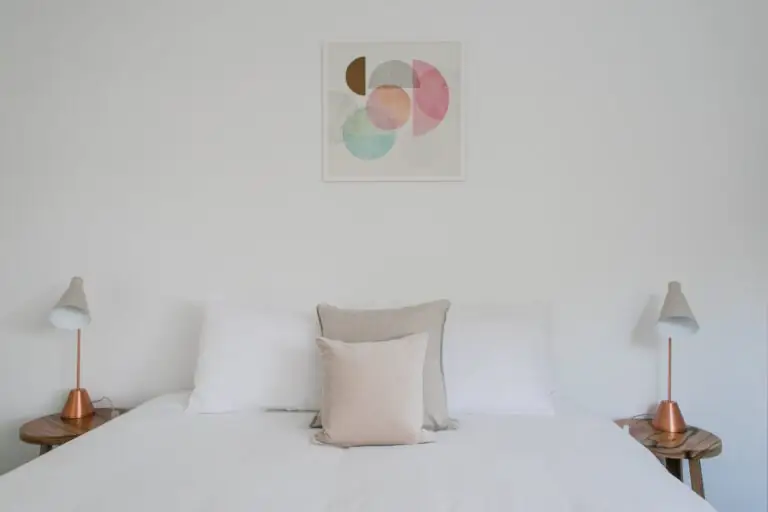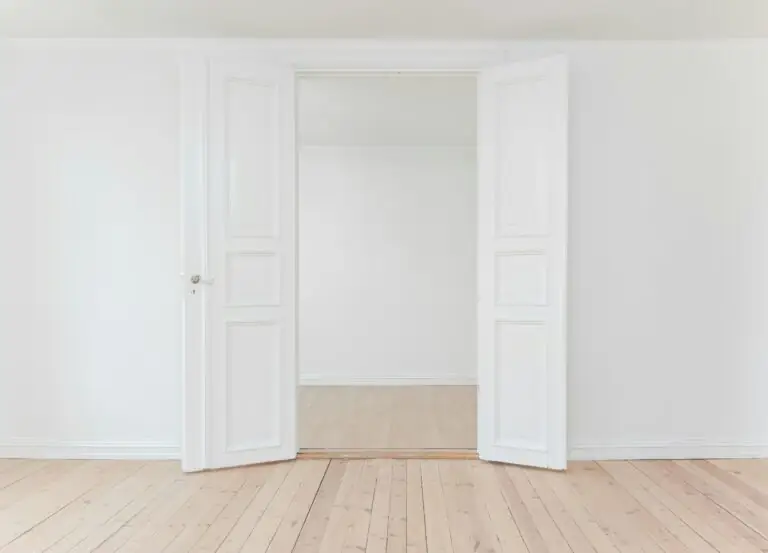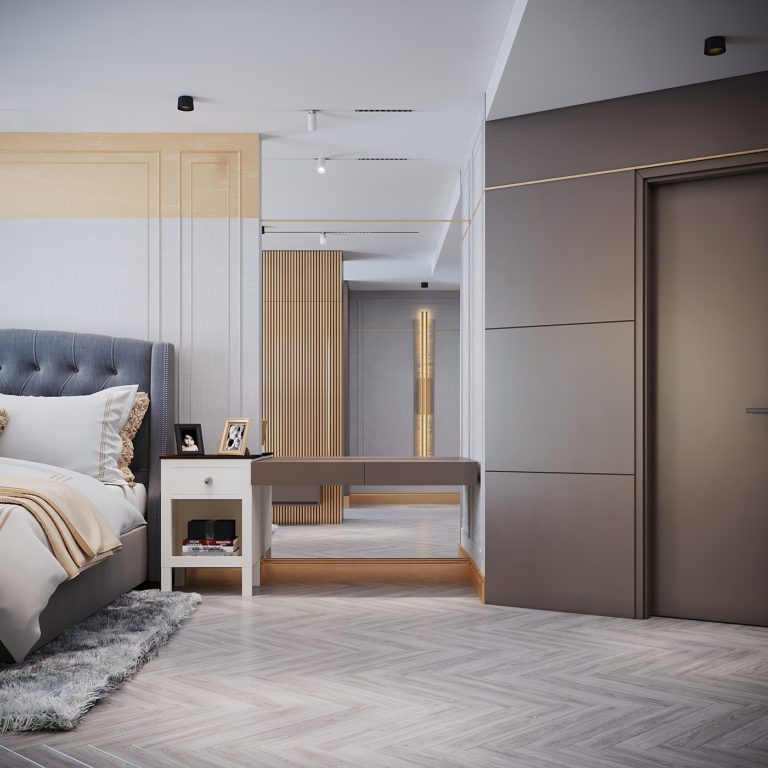3D wall panels: features, types, and design ideas
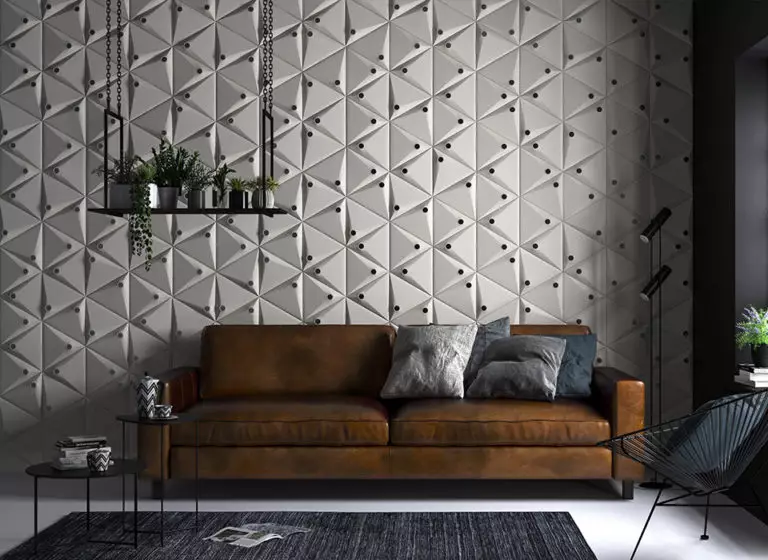
Volumetric panels are not something new in the construction market. In plaster execution, they have been used for a very long time. Another thing is that modern materials and manufacturing technologies have made them much more interesting, diverse, and better.
The role of volumetric wall panels in the interior: the nuances of choice and design
First of all, 3D wall panels are a fashionable trend in interior design, which is not too widespread yet. Such decoration brings an additional volume to the room, creates interesting visual effects thanks to the play of light on the embossed surface, and always becomes the central object against the background of the overall design.
Modern 3D wall panels in the interior can assist in solving issues of zoning and decoration of any horizontal or vertical surfaces, interior partitions.
You can apply wallpapers, paints, etc. on walls and see how they look in various interiors.
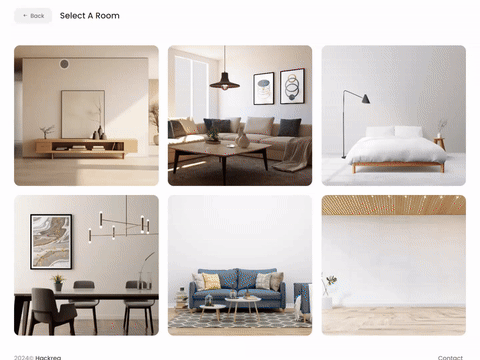
Types of decorative 3D wall panels
It is not enough to paste the wall with any panels you like. To achieve the desired result, complement, decorate the interior can only those types of finishes that are correctly selected in size, texture, and material. Before you go to such design delights, it is worth familiarizing yourself with the features of existing options, their advantages, as well as disadvantages.
Gypsum 3D wall panels
Gypsum panels are one of the most common. They are safe, non-toxic, resistant to extremes temperature, provide additional noise insulation, have a long service life. The ability to stain allows a few hours to update the room, bring new notes. During installation, you can achieve a groutless surface.
For their manufacture, it is used building gypsum. The installation of panels is done seamlessly. The joints between them are filled with special putty, and the entire surface of the coating is ground. After that, gypsum 3D panels can be painted in any color. They look great in any interior.
But the material is quite fragile. Therefore, the installation of items must be done carefully, trying not to lean on the corners and avoid screwing in the screws, using the adhesive method. Gypsum panels are not recommended for wall cladding in rooms with high humidity.
The structure of the gypsum panels provides the products with excellent heat and sound insulation qualities.
The material does not burn. Therefore, products can be used for facing fireplaces. On the construction market, gypsum 3D wall panels are presented in a large assortment and variety of design solutions.
Plastic 3D wall panels
In the manufacture of the 3d wall panels, for PVC panels are used technologies that allow you to create an imitation of many natural materials, including decorative stone and wood. Polymers also successfully imitate the texture of fabric or leather, and some collections include panels that are covered in high-quality leather with textile. Plastic panels have no equal in a variety of colors and textures. The depth of the relief depends on the thickness of the material, ranges from 30-120 mm. Plastic tiles are lightweight, waterproof, easy to maintain.
The basis for their manufacture is polymeric materials. Plastic 3D models are similar in their functions to aluminum decorative panels and are presented on the market of finishing materials with a vast assortment. It provides not only a variety of forms but also any color options for products.
High resistance of plastic 3D wall panels to temperature changes and humidity is their undoubted advantage. Moreover, such polymer products are flexible, lightweight, and durable. Plastic allows you to perform intricate patterns on the surface of panels that imitate expensive natural materials.
Decorative plastic boards are unpretentious in maintenance and are easily cleaned of dirt with a soft sponge and detergents.
Glass 3D wall panels
This type of decoration appeared one of the last, has not yet managed to become very popular. Glass 3D wall panels look very beautiful, have excellent quality characteristics, but not everyone can afford them. Furthermore, due to the large weight, they are not suitable for all walls, especially partition walls.
For the manufacture of such panels, is used tempered glass with a thickness of 0.5 cm. It has increased strength, but even in the event of its destruction, the material does not give sharp fragments, increasing its safety.
3D glass panels make the interior light and airy; they look especially beautiful when decorating the walls of pools.
Aluminum 3D wall panels
The finish is not afraid of exposure to temperature or moisture, resistant to ultraviolet and various alkaline environments. Further processing or staining is not required. Manufacturing technology allows you to experiment with texture and color. Due to their lightweight, they can even be mounted on plasterboard partitions, but the panels are attached to the metal profile frame so that they will take away some area from the room.
Such models are preferred by people who, in addition to the decorative properties of the coating, give great importance to the strength, reliability, and safety. Panels are made of aluminum or its alloys. Their surface is decorated with volumetric drawings applied by the perforation method, after which it is covered with a protective polymer film.
A positive aspect of aluminum 3D panels is their corrosion resistance, fire safety, and moisture resistance.
Aluminum panels are mounted on a frame base made of a metal profile. Such models are often used in decorating the walls of museums and exhibition halls. In-home conditions, panels are good for decorating dining rooms, living rooms, and kitchens. Aluminum panels are suitable for wall decor of interiors, made in a minimalist or “high-tech” style.
MDF 3D wall panels
Like the previous options, MDF panels can have a different texture and color. They are made of high-quality components, which provide stability and long service life. However, they are not recommended for use in rooms with high humidity, for bathrooms, saunas, baths. The most popular with designers painted surfaces. A feature of MDF panels is the ability to use them not only as decoration for walls but also for the decoration of partitions, furniture facades, doors.
These are wood fiberboards, which are made of wood chips hotly using individual molds. The adhesive used is lignin. A polymer protective film is applied to the surface of the finished MDF 3D wall panel, which ensures long-term operation of the coating.
The MDF panels have sufficient strength and resistance to temperature fluctuations. The only drawback of this model is the limited possibility of its use in a humid room.
Wood 3D wall panels
3D wall panels made of natural wood are the most expensive of all types listed above. Wooden panels look stylish and have an exquisite design, the complexity of which depends on the quality of the feedstock and the manufacturing technology of the models.
Products have a stable weight, are used for classic design and interior decoration in the modern, Empire, or Baroque styles. To increase durability, wooden 3D wall panels are impregnated with individual preparations.
The same type of panels can be attributed to similar bamboo products.
Bamboo 3D panels are considered environmentally friendly products. You can opt for them if you have doubts about the toxicity of other materials.
Options for using 3D wall panels
Based on the many years of experience of designers, decorators, we can highlight the most successful options for using 3D panels in the interior of rooms for various purposes.
3D wall panels in the living room
It is the living room that is most often decorated with this type of decoration. The original addition of the wall panels will be in the TV zone. Especially interesting are models that simulate waves, the surface of the water, or modern geometric shapes.
The volume on the walls favorably emphasizes the fireplace area. At the same time, it is important to choose the right material so that the style of the home with the style, texture, decoration pattern. For rooms made in the classical style, panels that imitate a caption fabric or a carriage screed are often chosen.
Columns with a straight, square, rectangular, panels will give a special chic, especially if you add them with lighting.
3D wall panels in the kitchen
The second most popular option is the use of 3D wall panels in the kitchen interior or dining room. Here, as a rule, preference is given to plastic or MDF panels, since they are easy to care for and resistant to moisture. If we are talking about the use of gypsum materials, they are also coated with water-repellent varnishes.
Most often, the material is lined with the working wall. Also, in the kitchen, you can successfully highlight the dining area. In spacious rooms, this type of decoration can be used simultaneously in two places, creating a more holistic design.
3D wall panels in the bedroom
In the bedroom, there are usually not many places where the volumetric texture will look profitable. In most cases, this is the wall at the head of the bed. It is important that the selected texture and color of the material successfully complement the overall design.
If the decor is small, sometimes the entire sleeping area is distinguished: the trim along the bed’s width is raised to the entire wall and thrown into the ceiling three quarters. In small rooms, a small decorative panel on the wall will look better.
3D wall panels in the children’s room
Some manufacturers offer a special lineup for children’s rooms. Such panels often have the form of lego cubes, a variety of geometric shapes, colors.
An interesting addition to the nursery will be part of the wall with a wave-like texture, which is painted in rainbow colors. In the children’s room, this decor is recommended to be used only in the play area.
3D wall panels in the bathroom
In bathrooms, volumetric panels are used locally or to highlight a separate zone in combined bathrooms. You can distinguish any zone if you select a material that is not affected by moisture and temperature.
Most often, volumetric make a wall above the bath or a completely free wall. An unusual finish will help highlight the toilet zone and not make a strong emphasis on it if there are lighter shades.
3D wall panels features
Wall relief panels are made using various technologies using several types of materials.
The 3D wall panels are modelled using computer technology. Then a suitable material is selected, and 3D wall panel production begins directly at the factory. At this stage, the panel is formed, giving it volume and the necessary surface topography.
After the foundation has been created, the decorative part of the panel is carried out, which has additional functions, protecting the foundation from moisture, mechanical damage, and even burning out when exposed to sunlight. The board’s surface can be painted, enameled, veneered, glossy, matte, fluorescent, or metalized.
The manufacturing process of 3D wall panels is quite complex, technologically, time-consuming. For this reason, the cost of the product is quite high.
Advantages and disadvantages of 3D wall panels
Like any other modern material, 3D wall panels have their pros and cons.
Benefits:
Disadvantages:
Technology for installing 3D wall panels
Before installing 3D wall panels with your own hands, it is necessary to calculate materials. Its complexity depends on the type of volumetric models chosen since they have individual sizes. Knowing these characteristics and surface area, it is easy to calculate the required number of panels.
After the panels are delivered to the place of work, you can begin mounting them on the walls using one of the following methods:
Advice! Given the considerable cost of high-quality 3D panels, you should work with them very carefully. If at least one of the cladding elements is damaged, its entire pattern will be broken. Then, you will have to buy a new panel separately and carefully restore the design.
